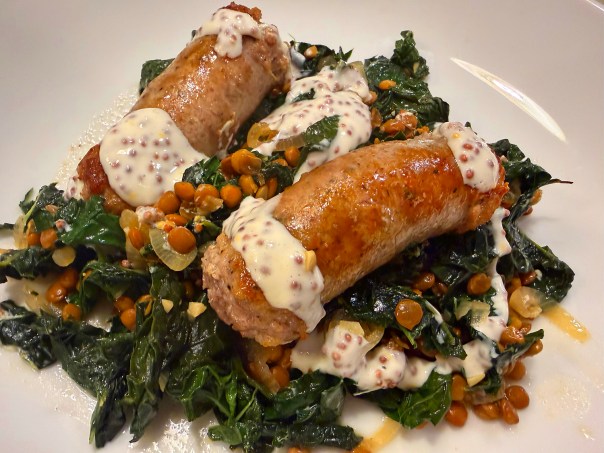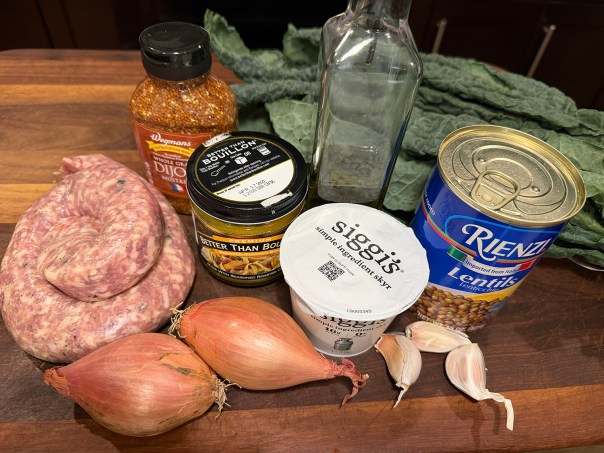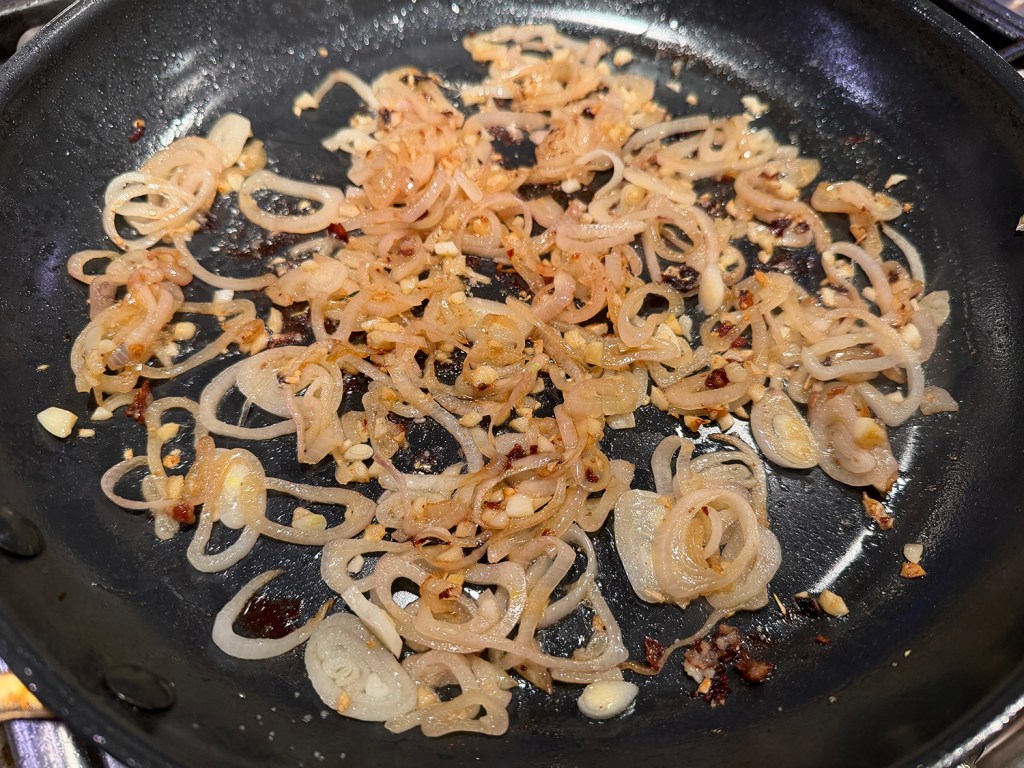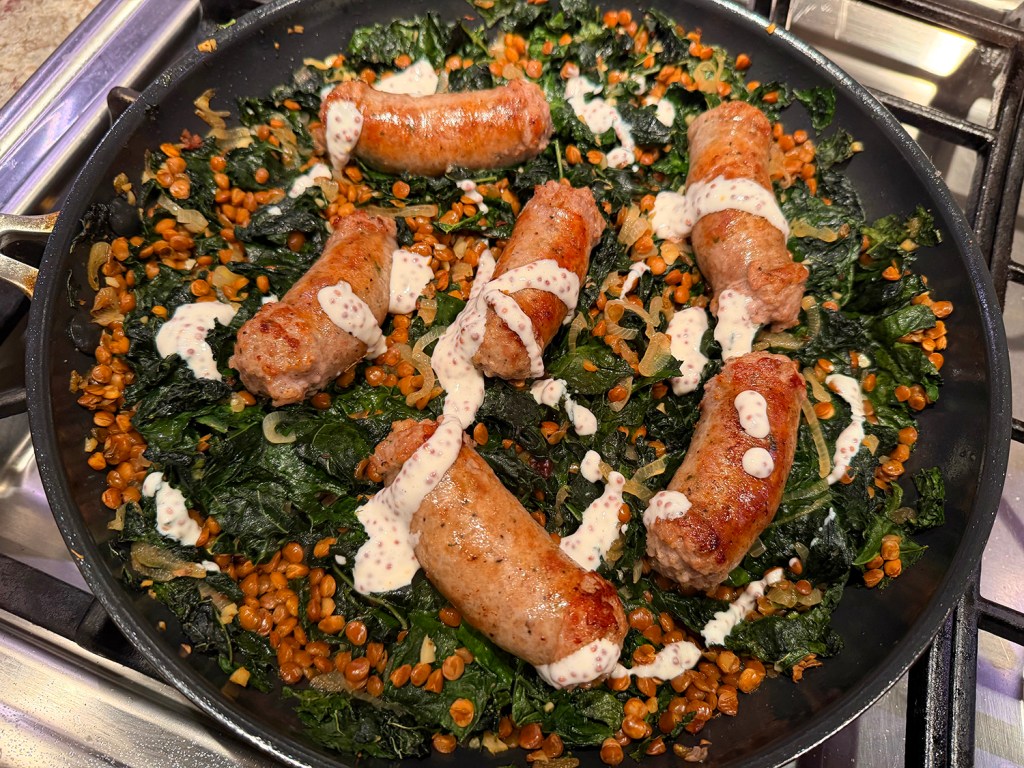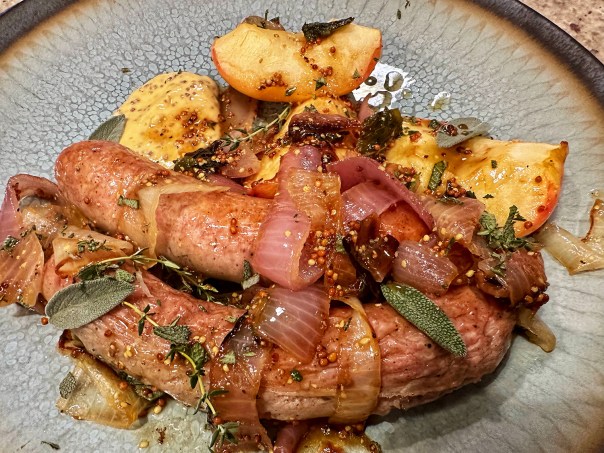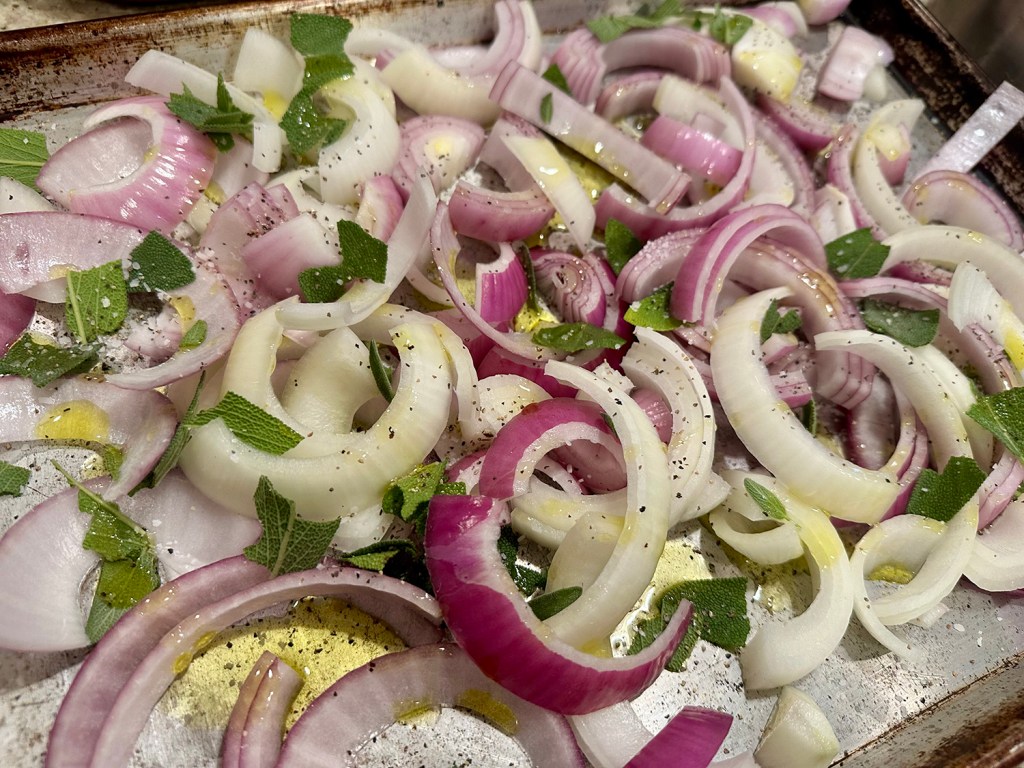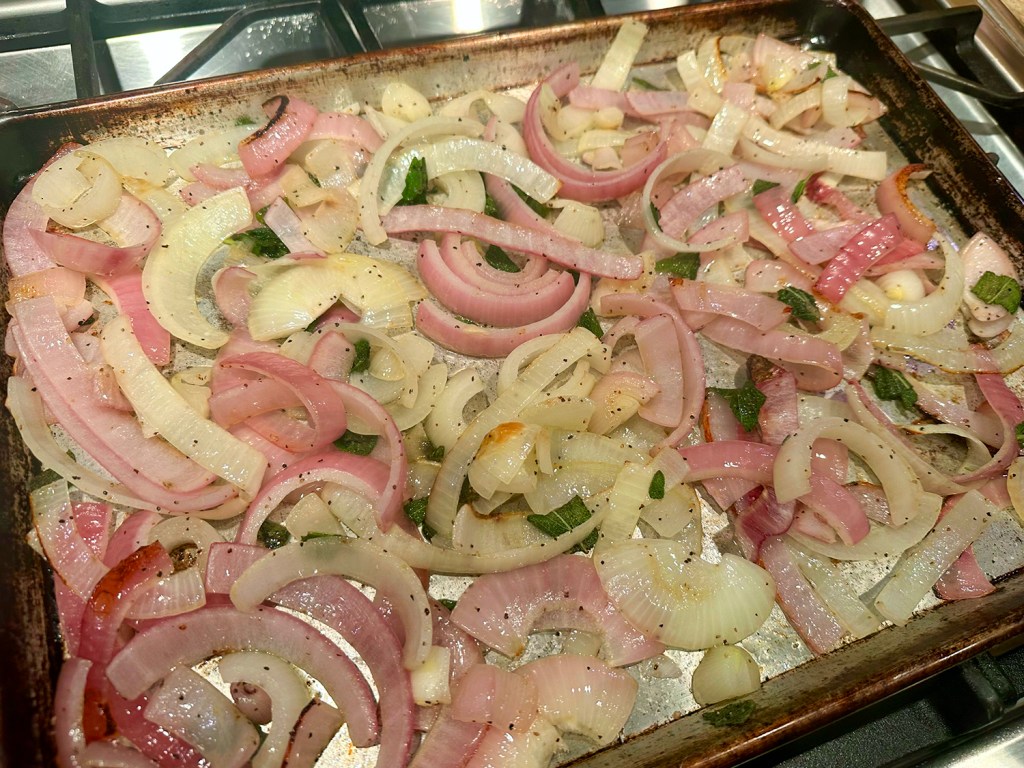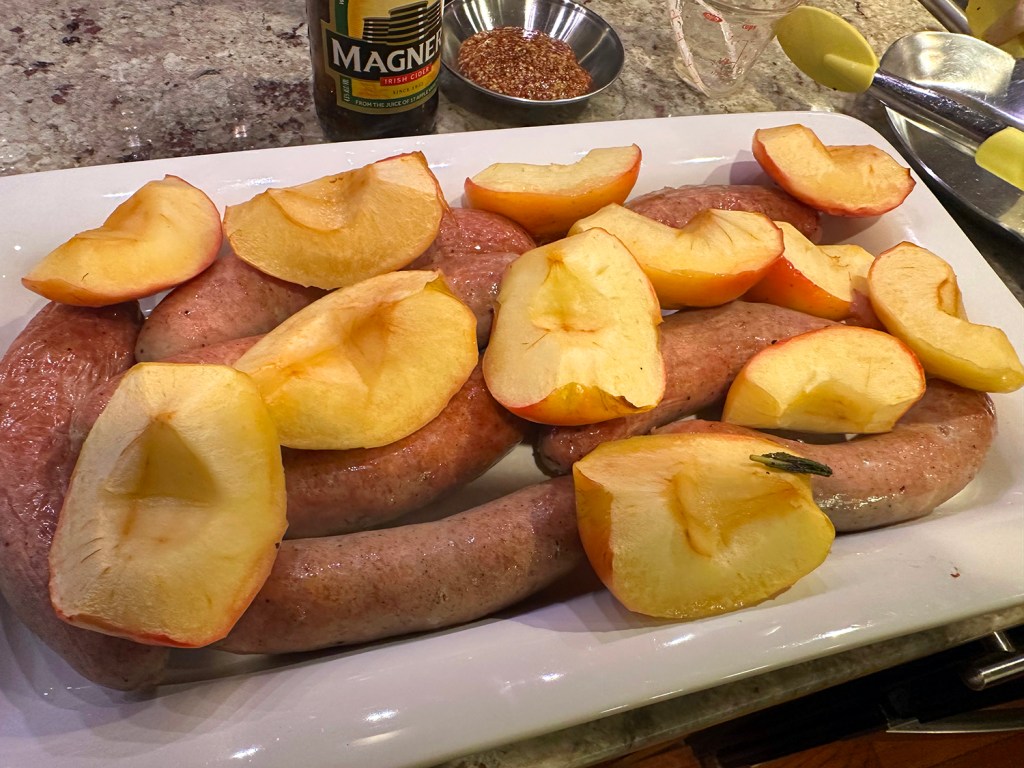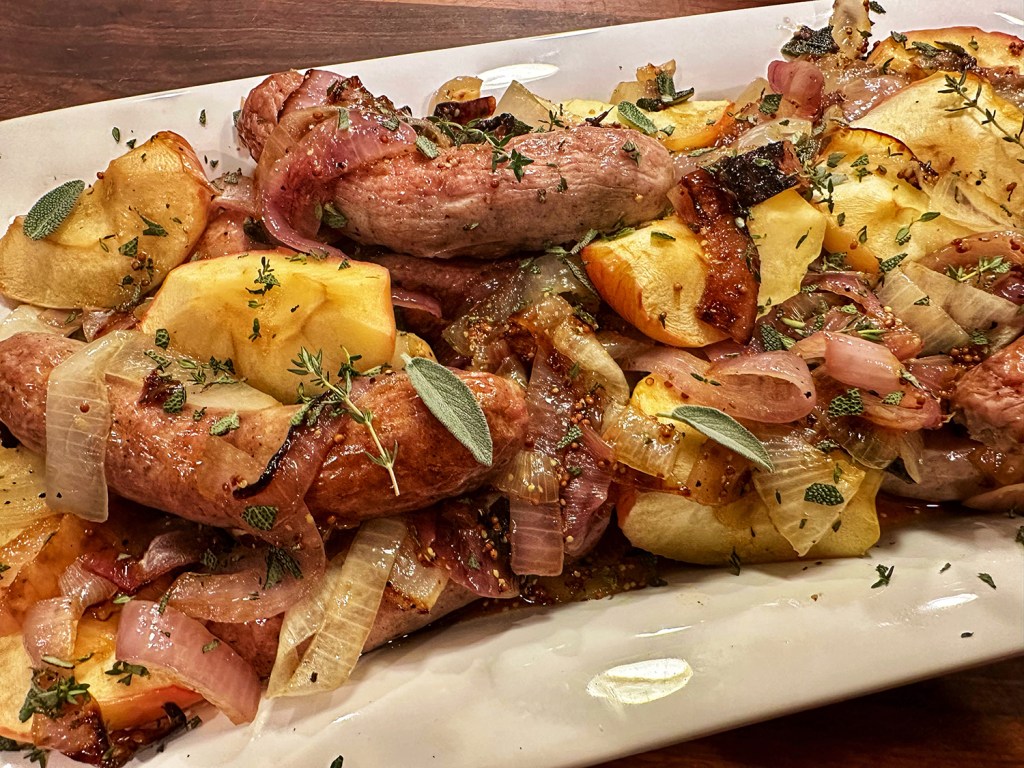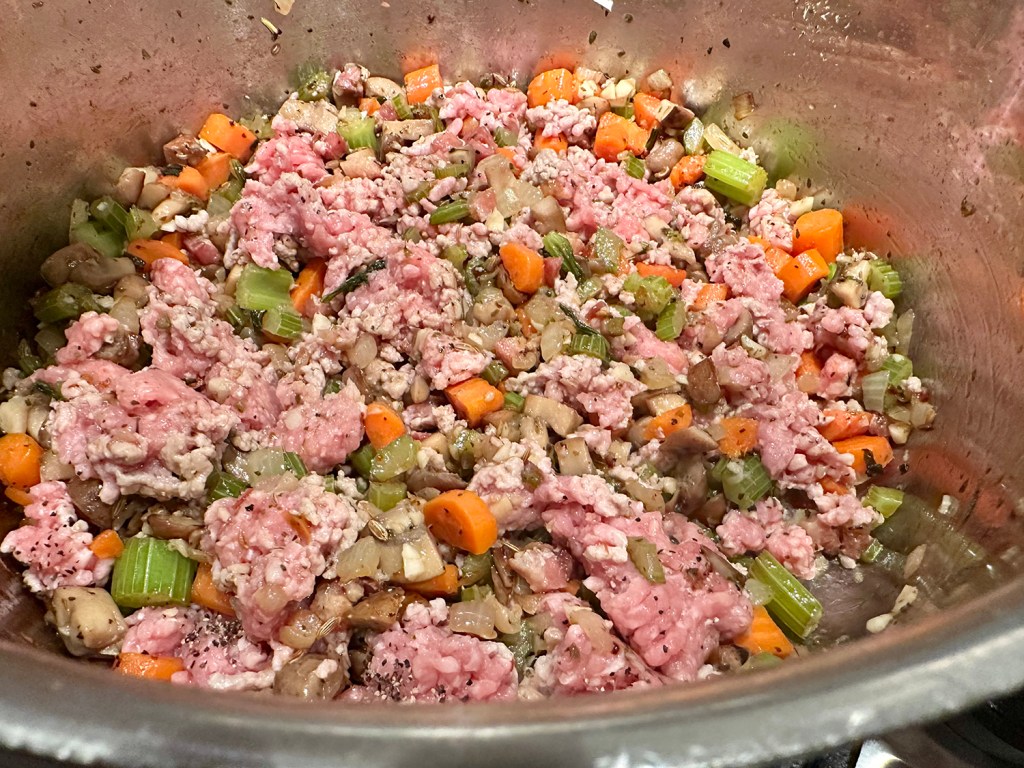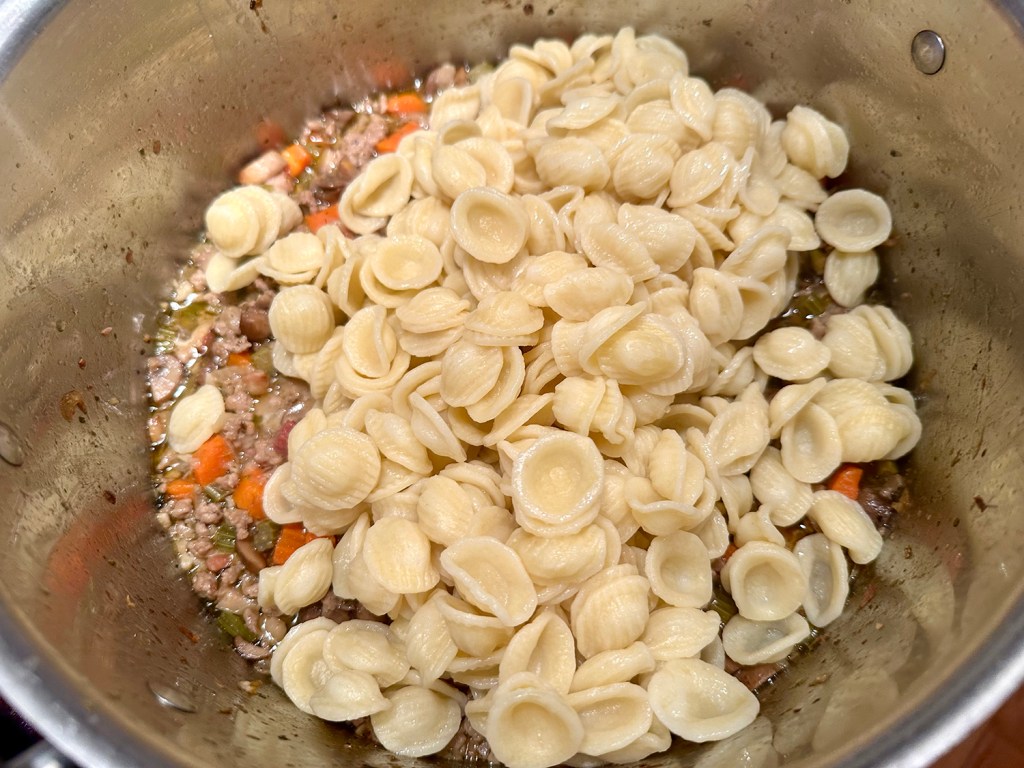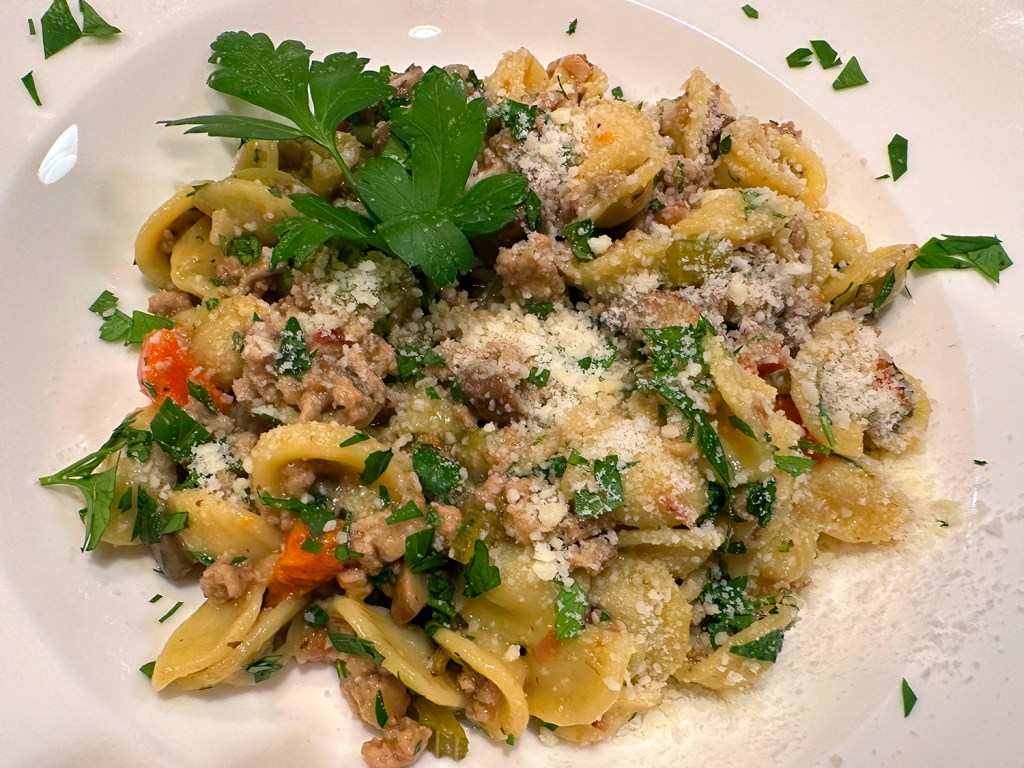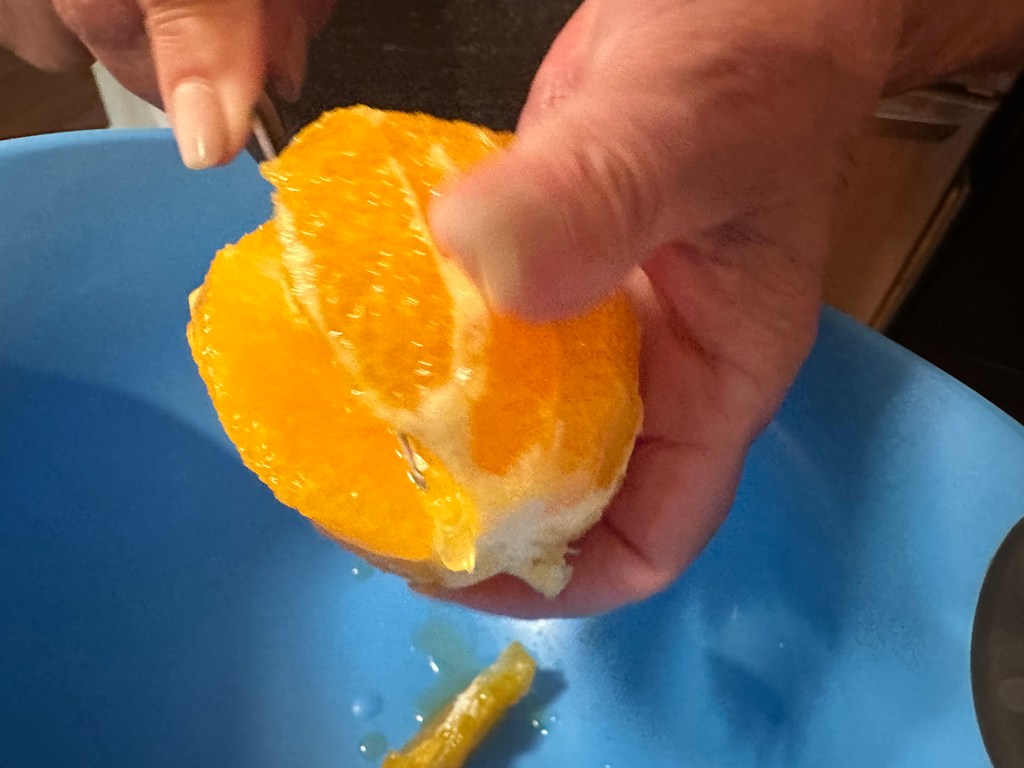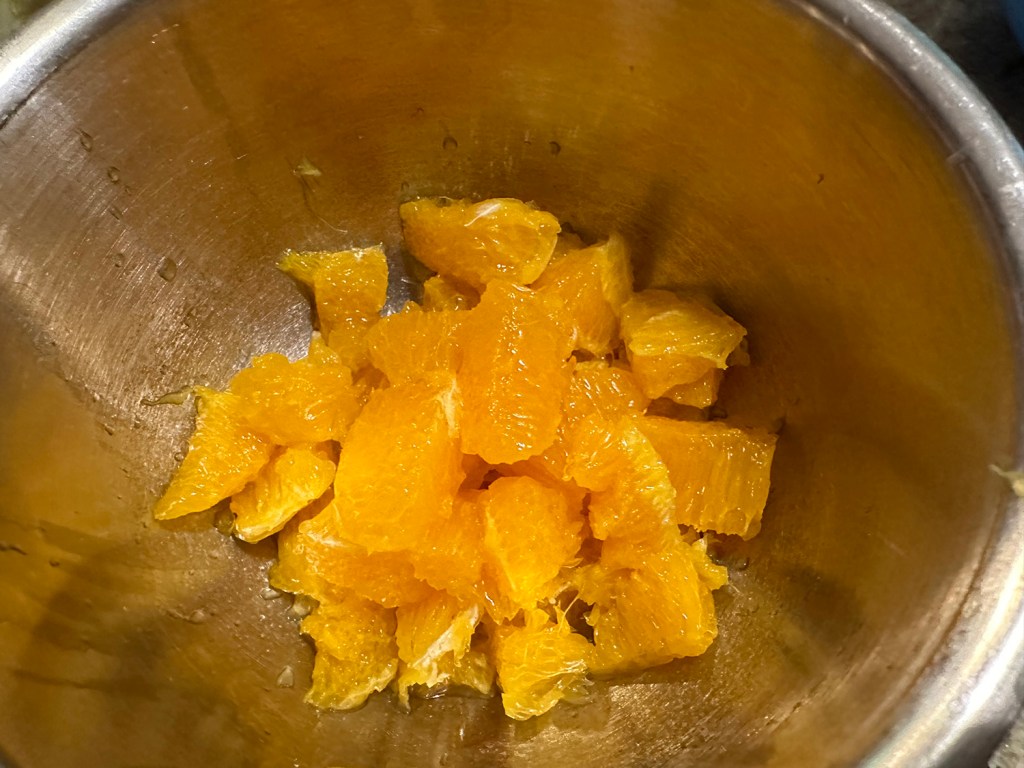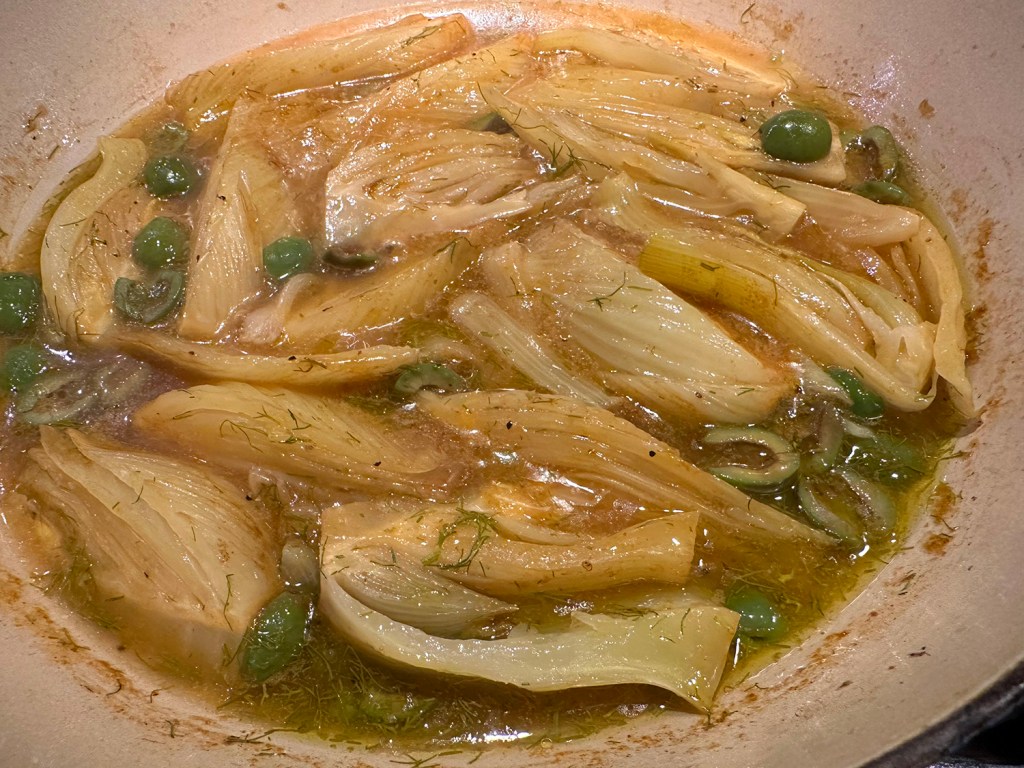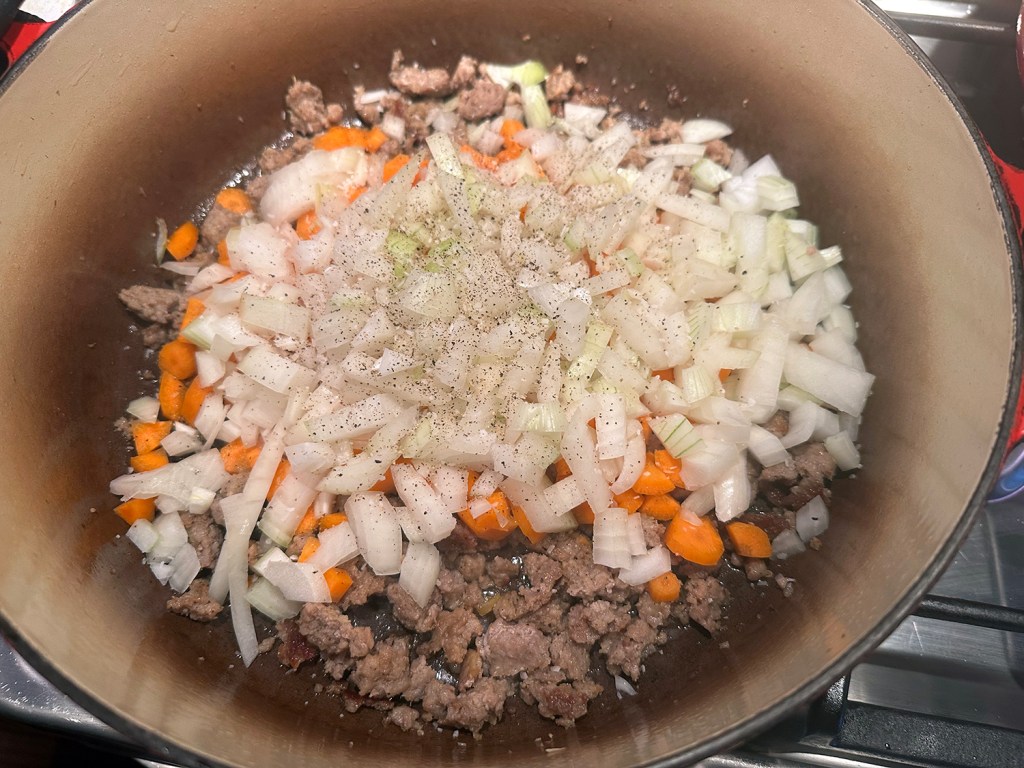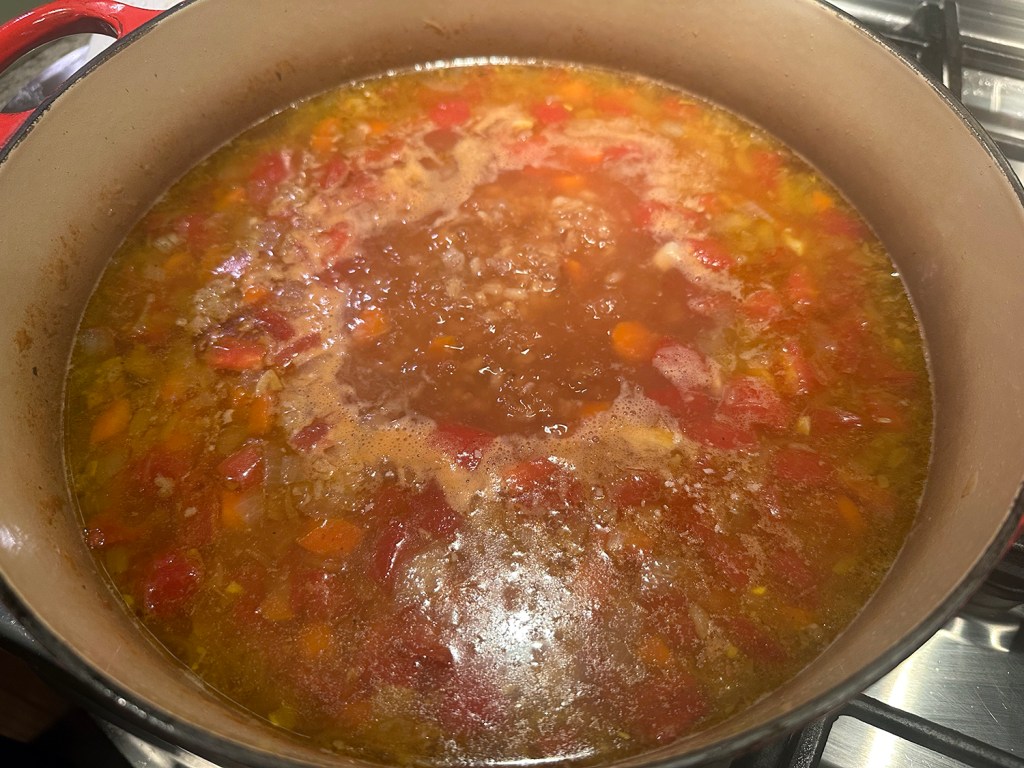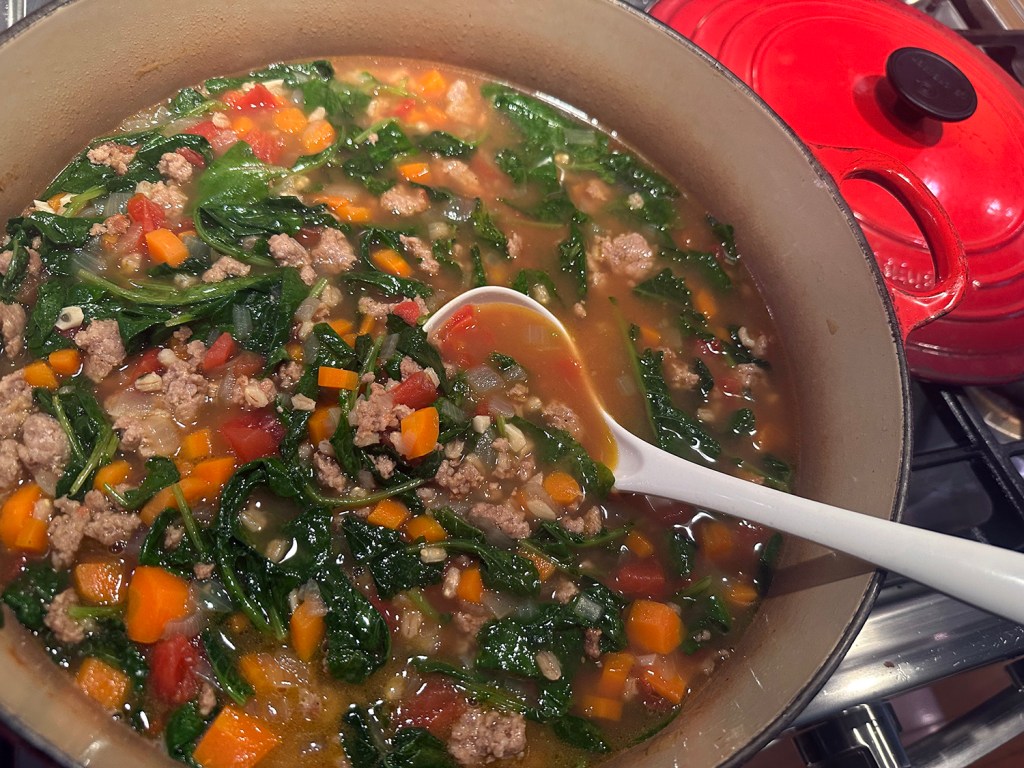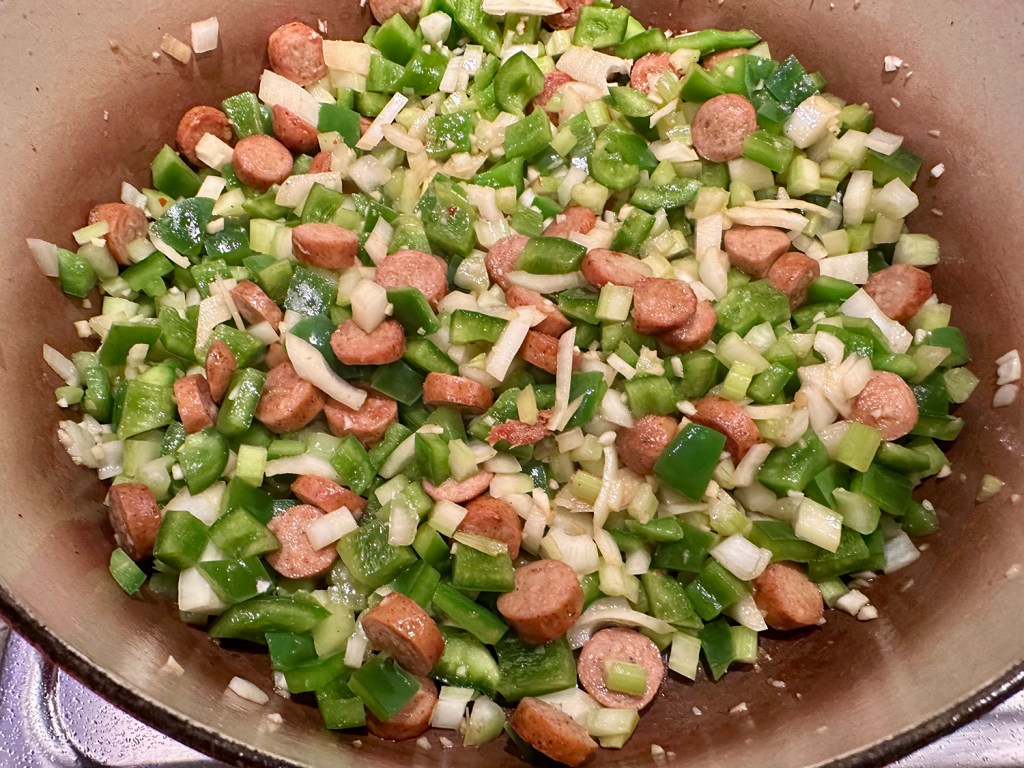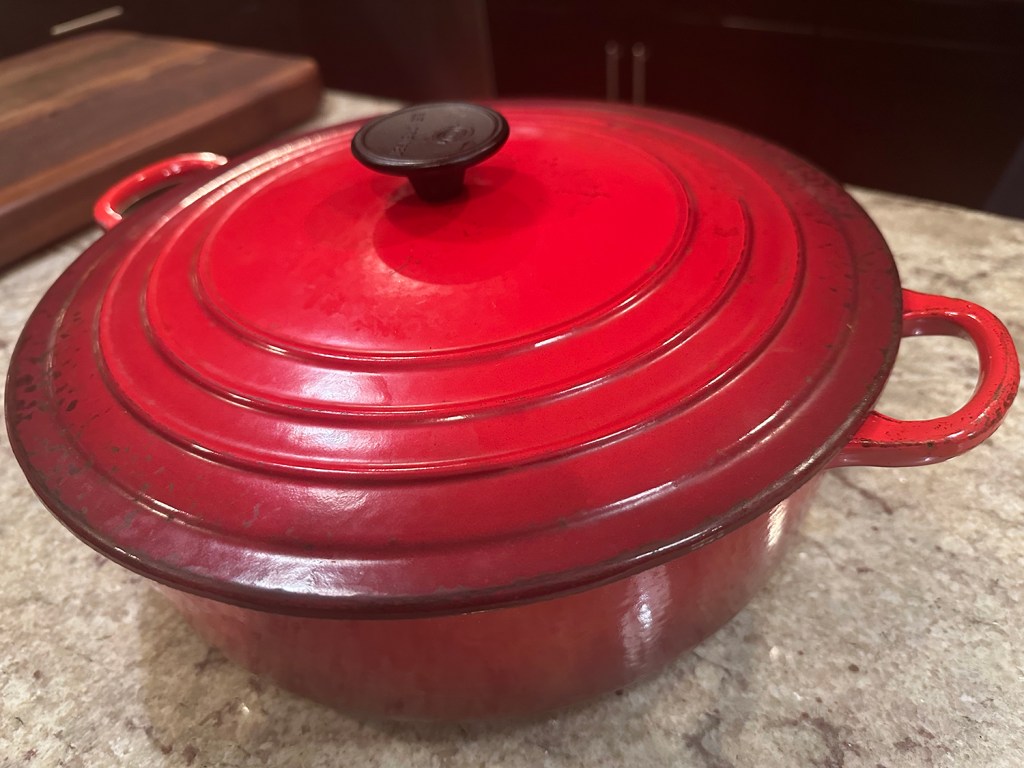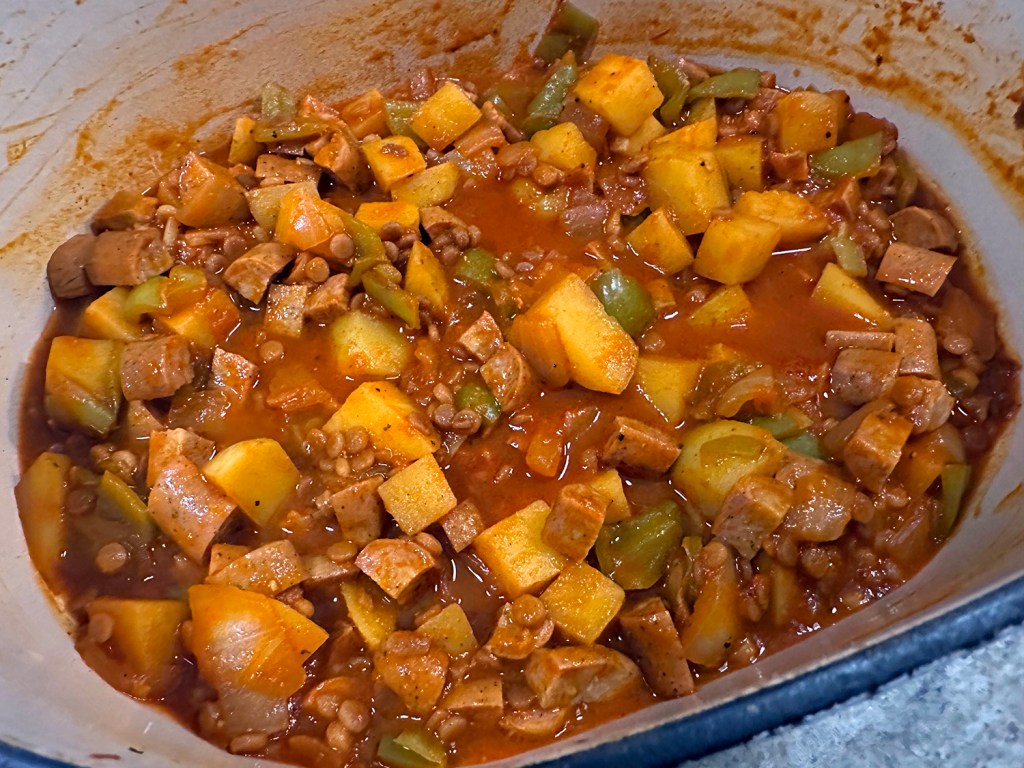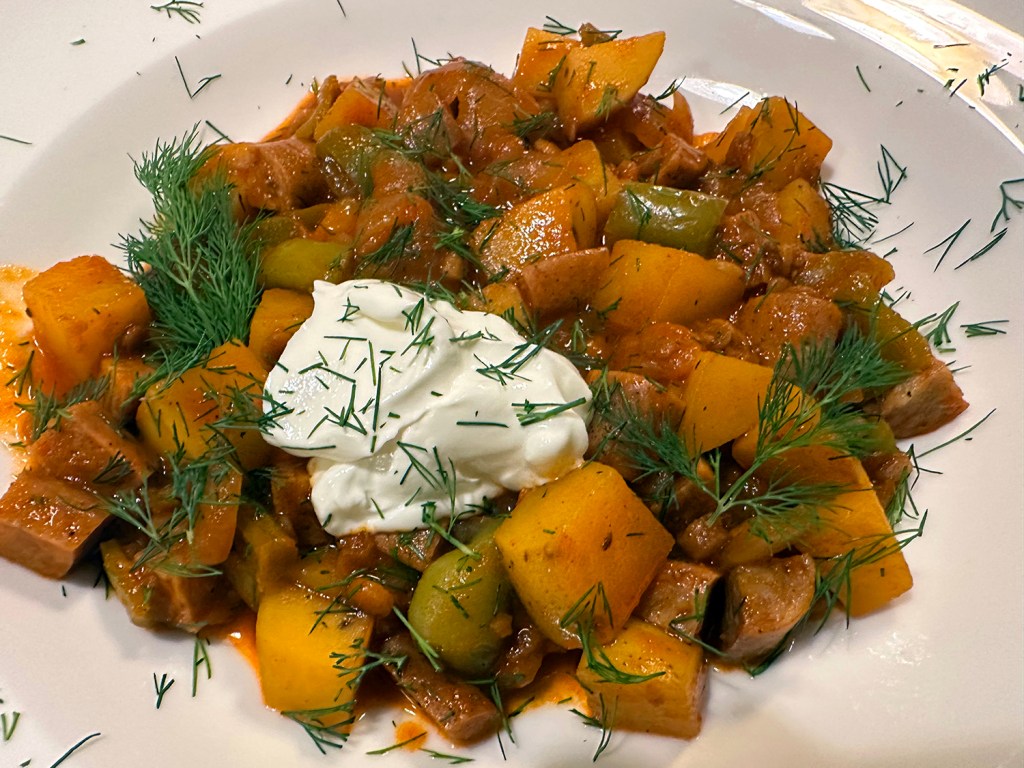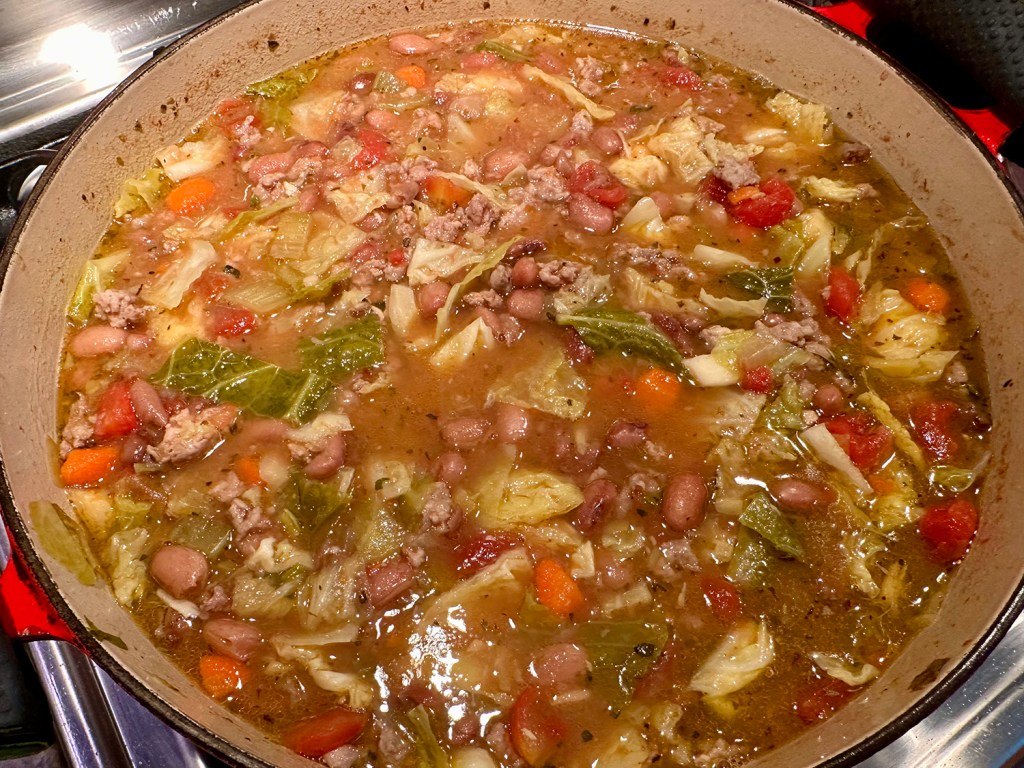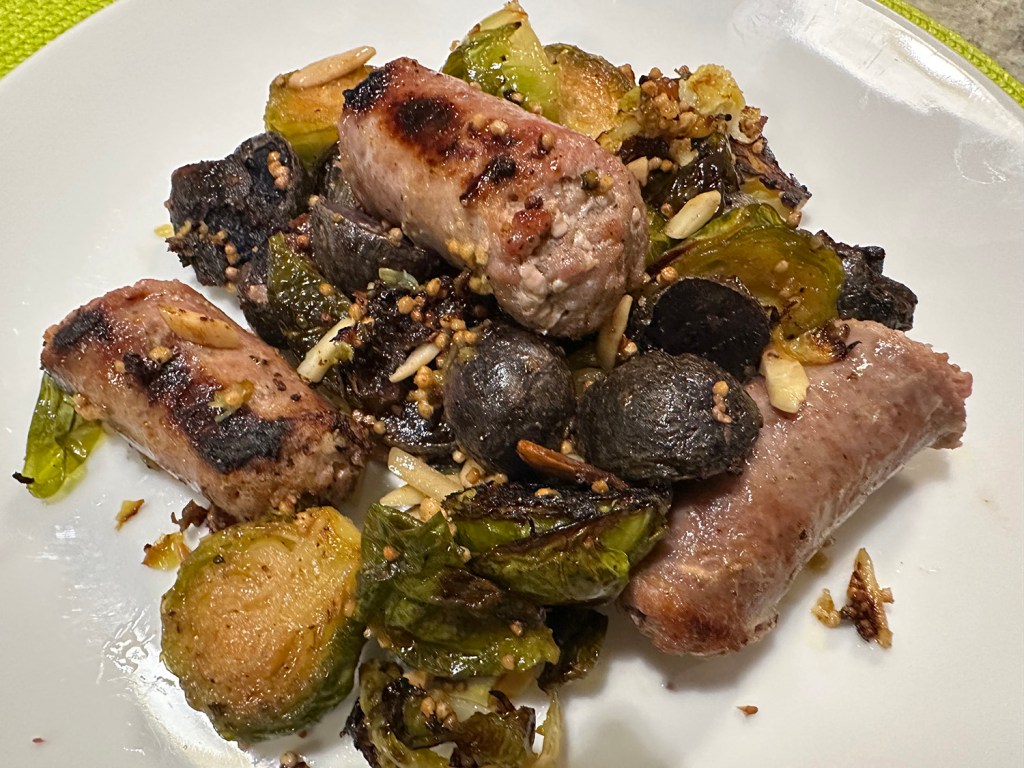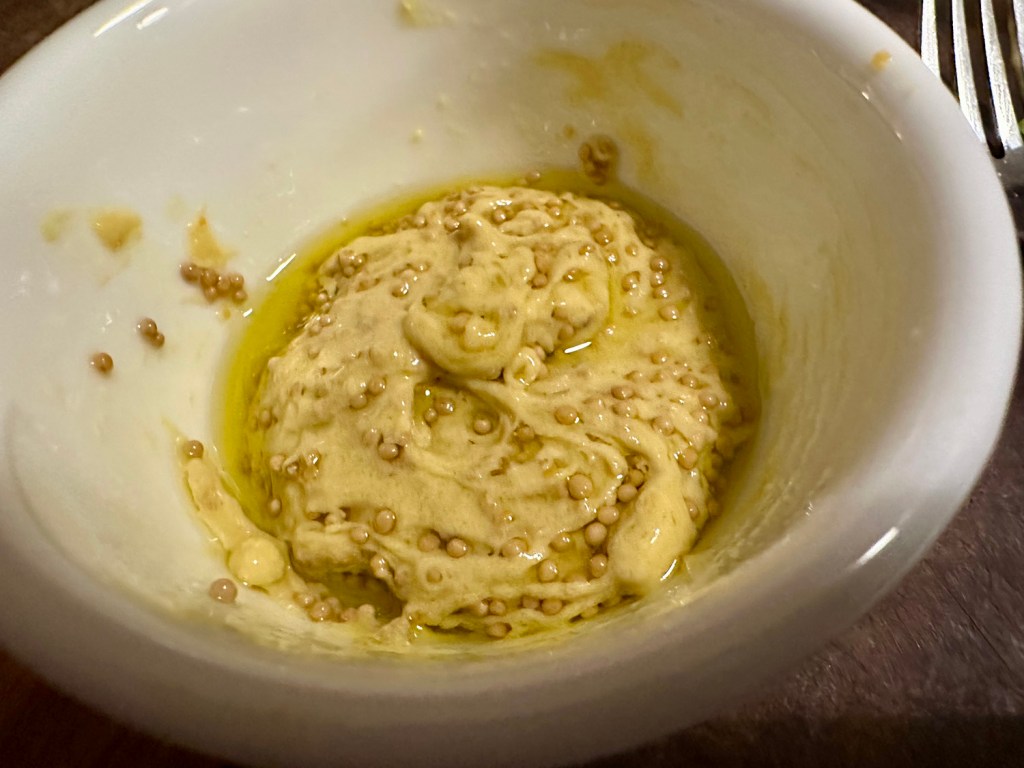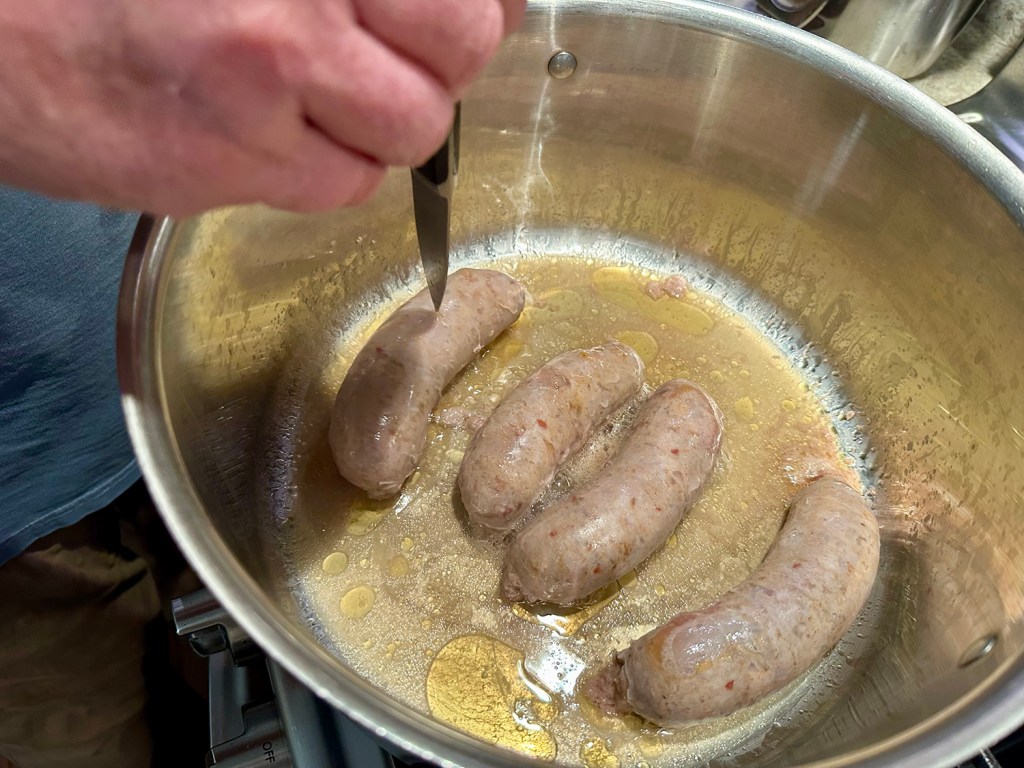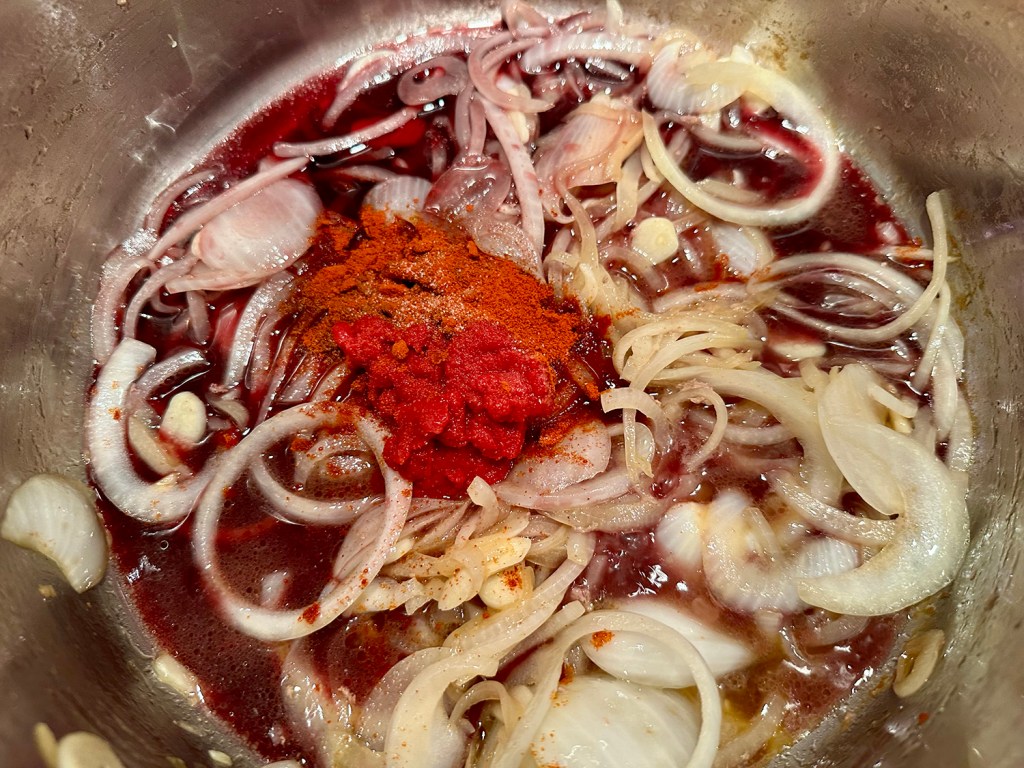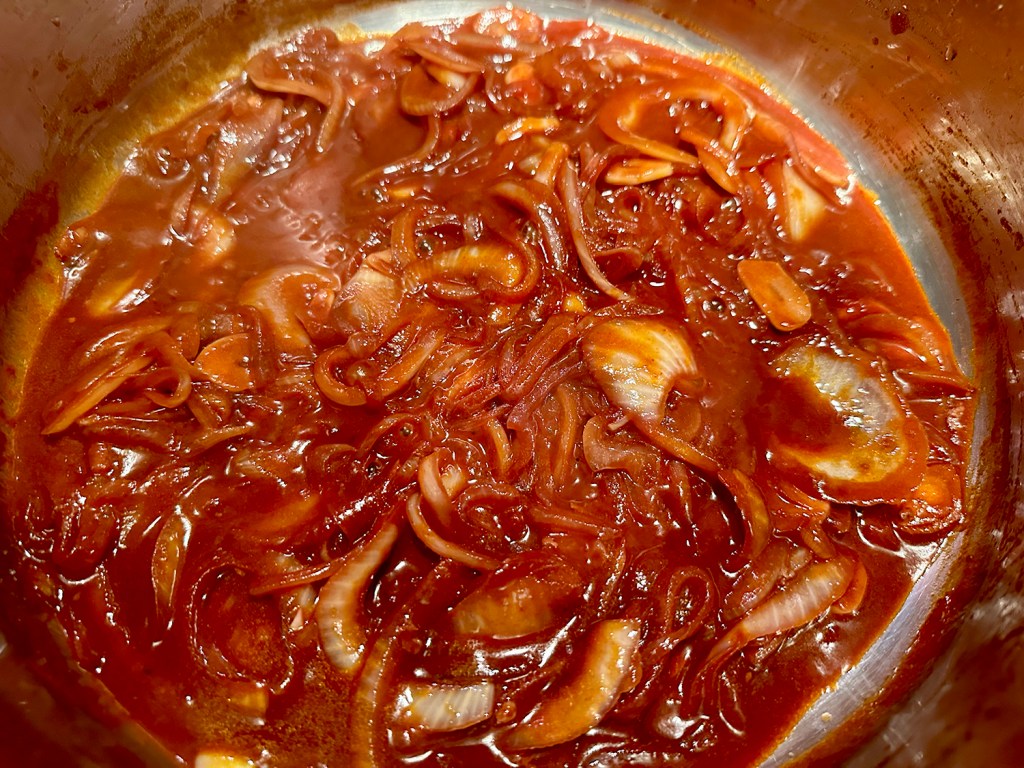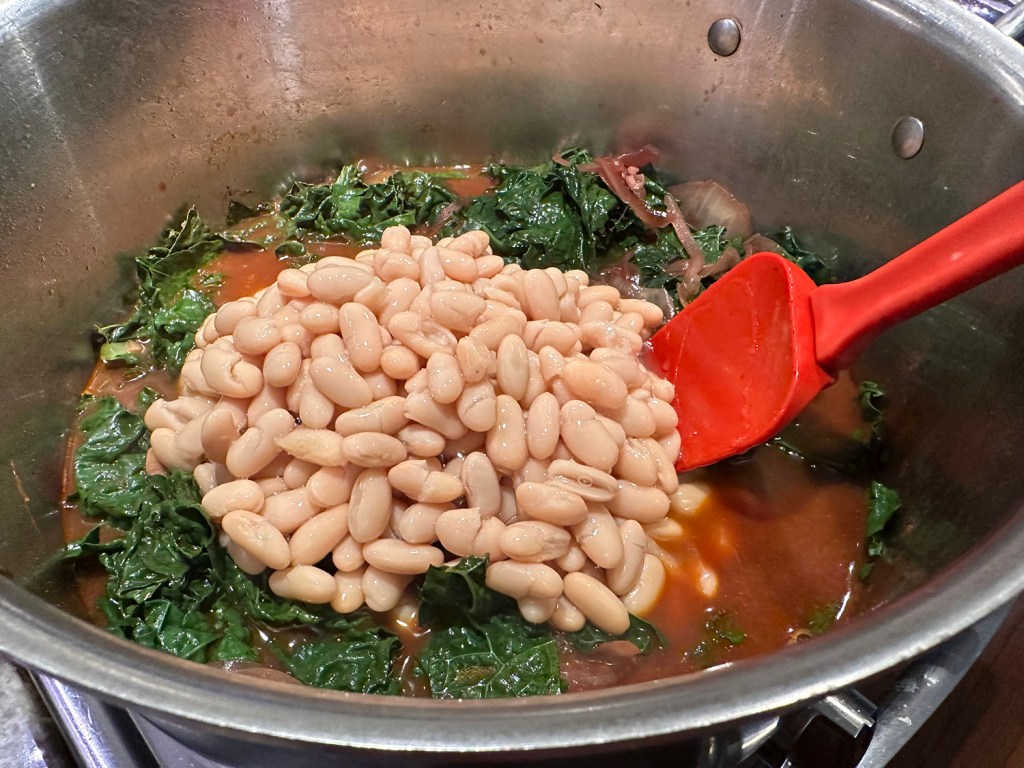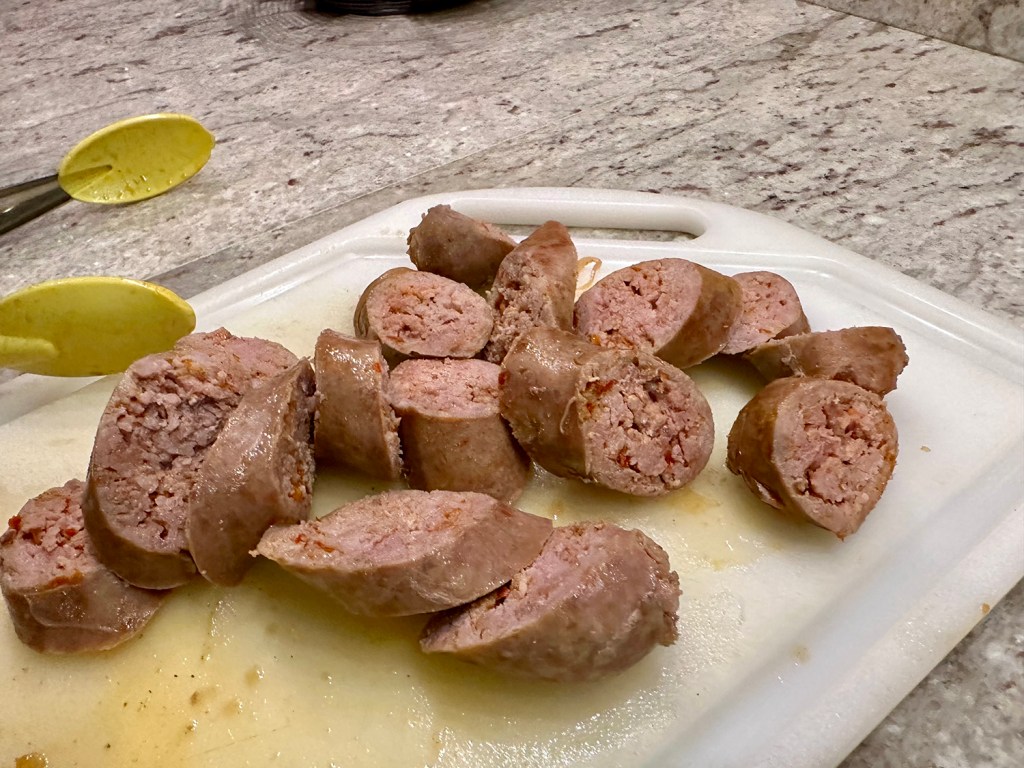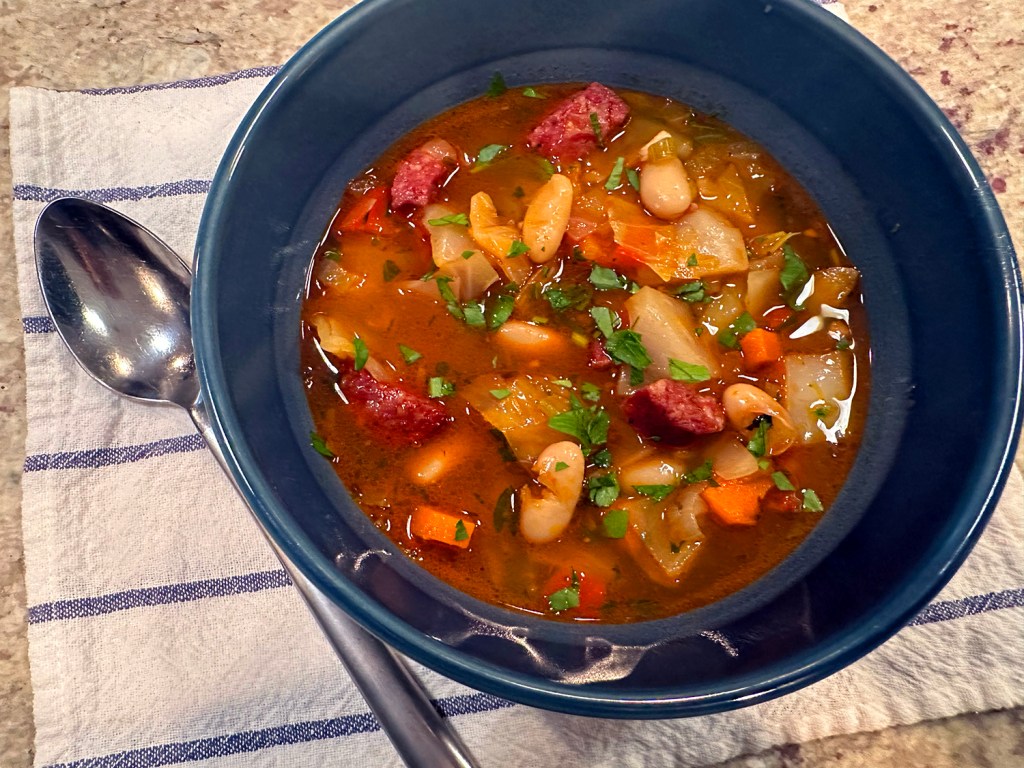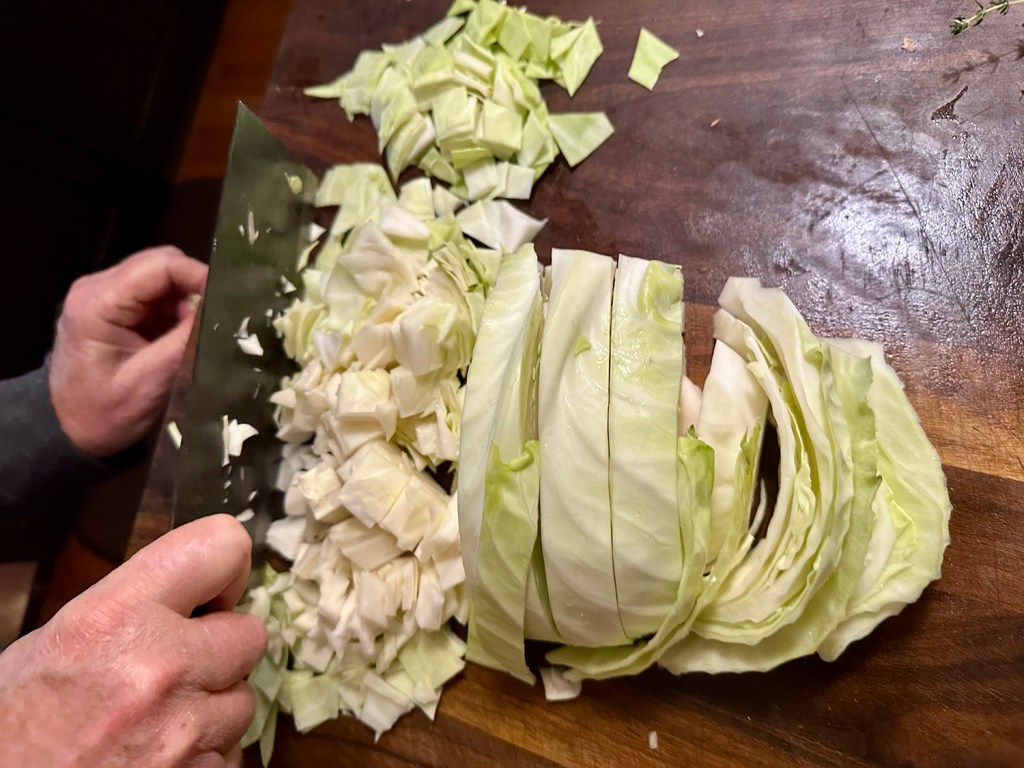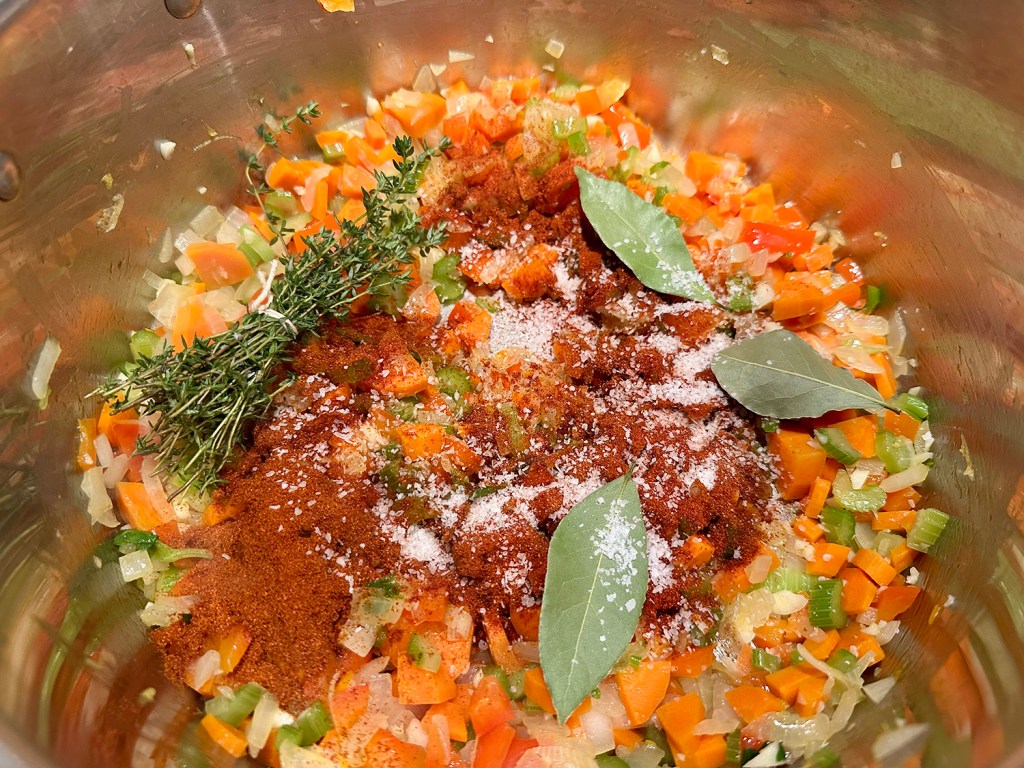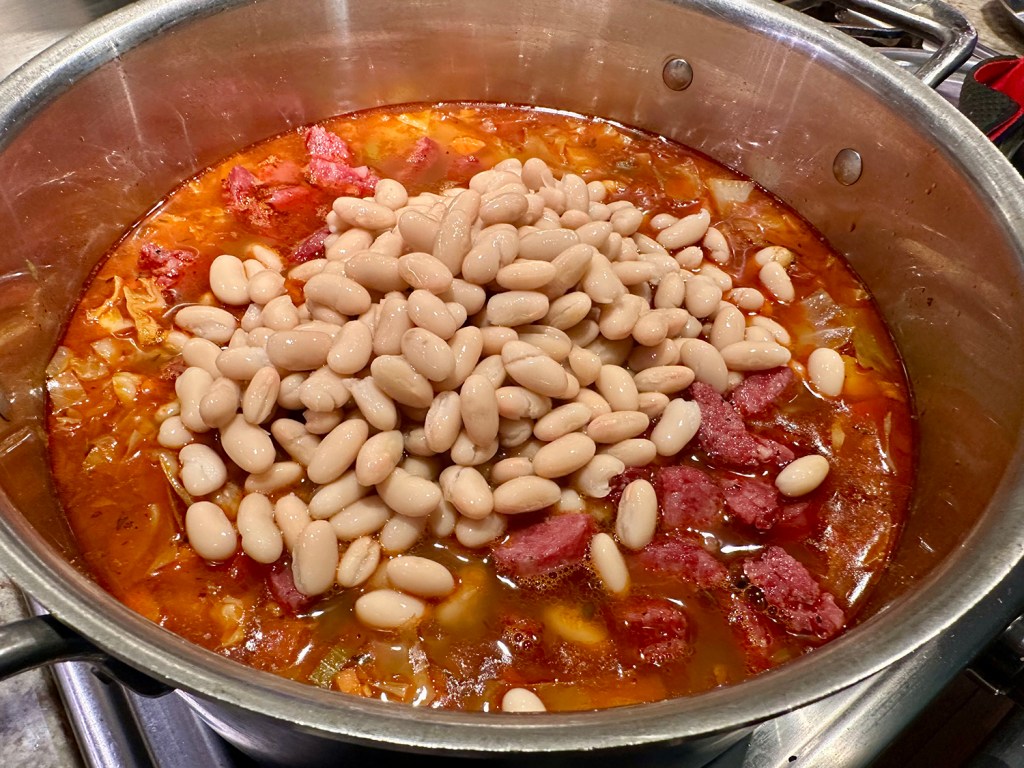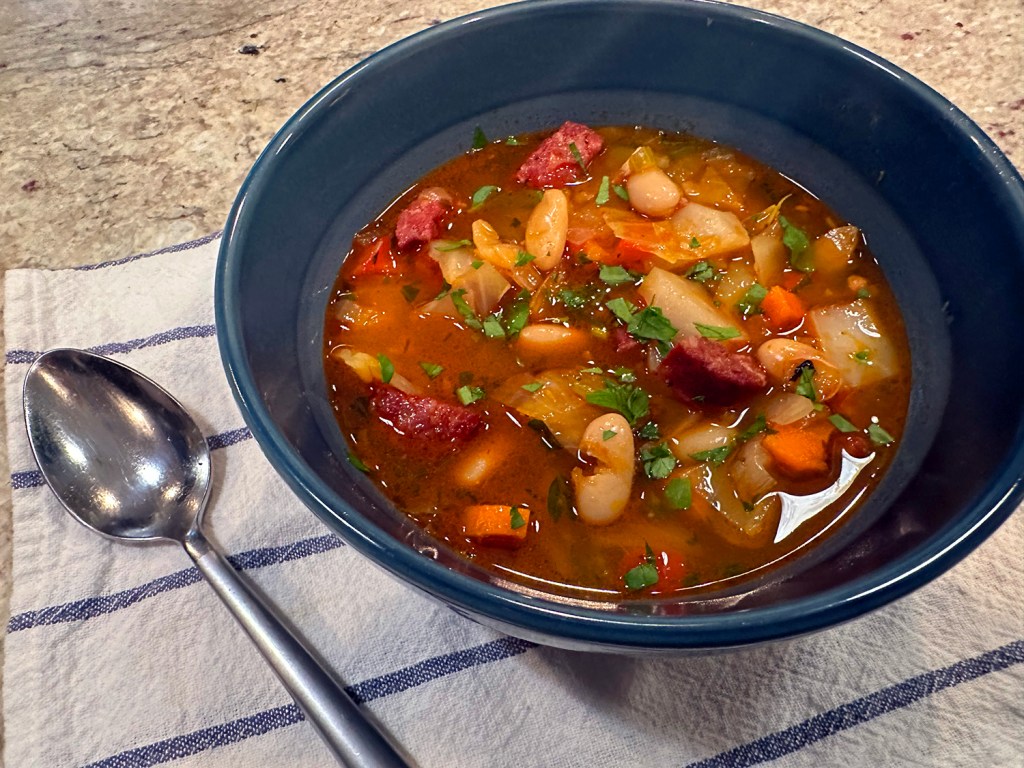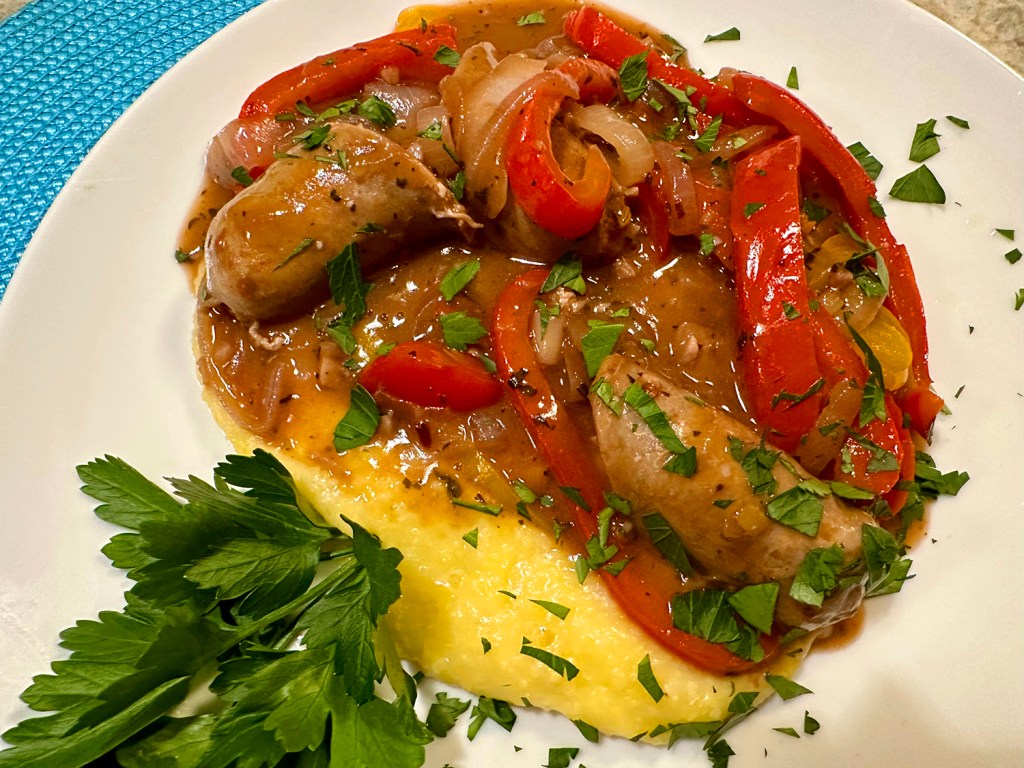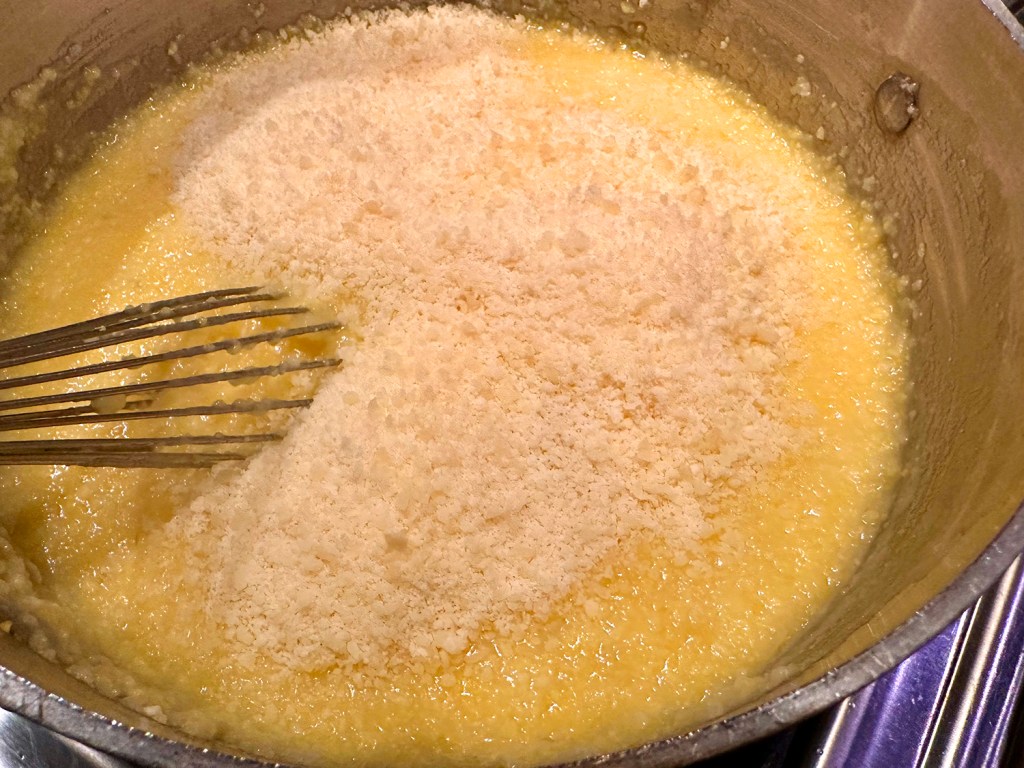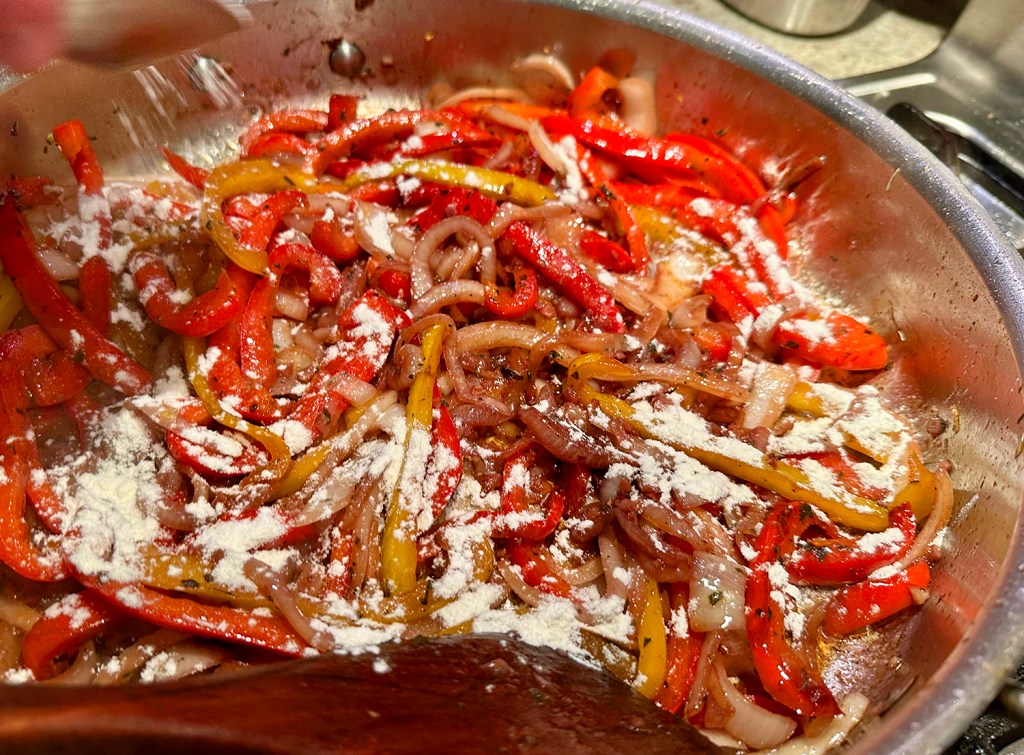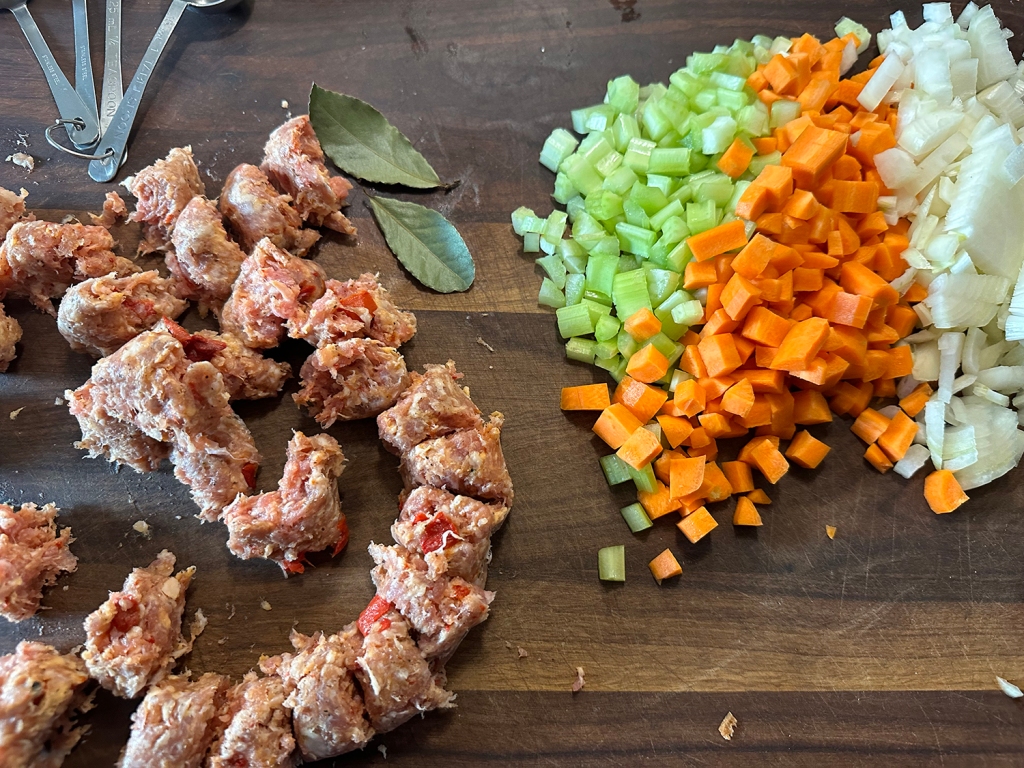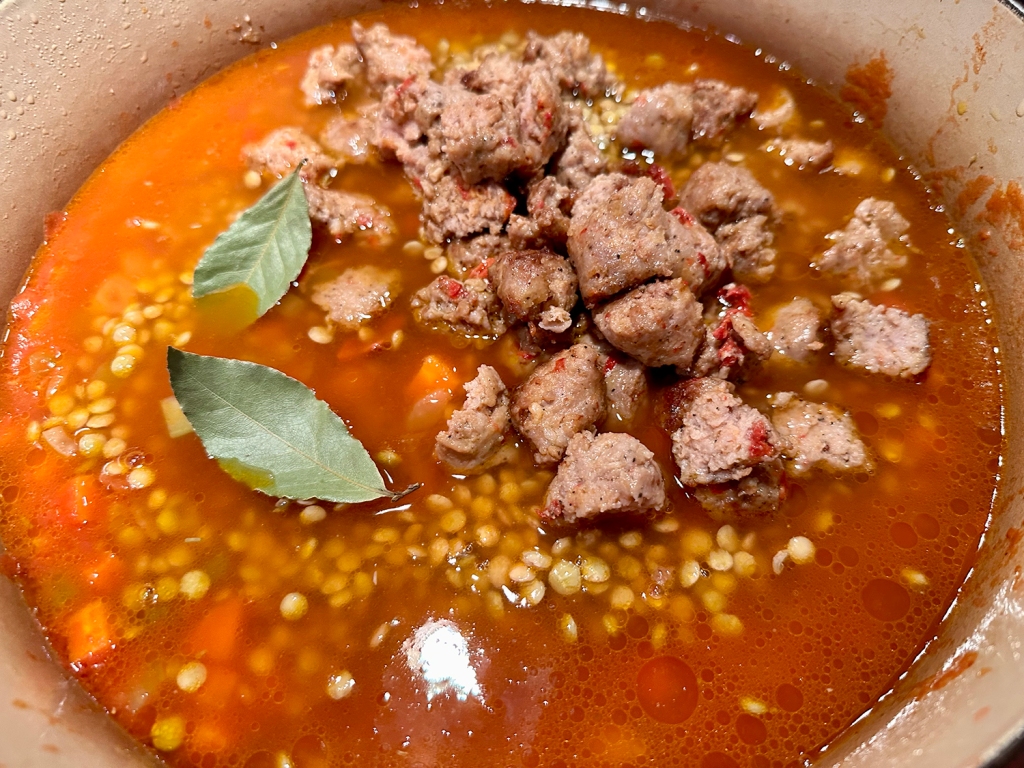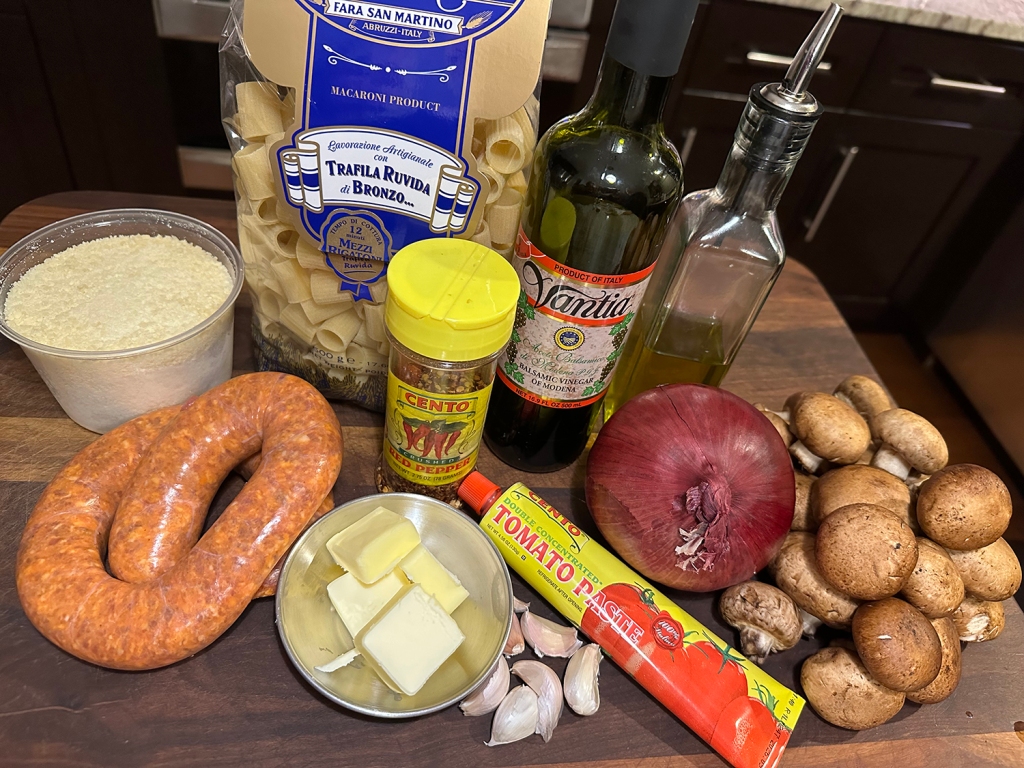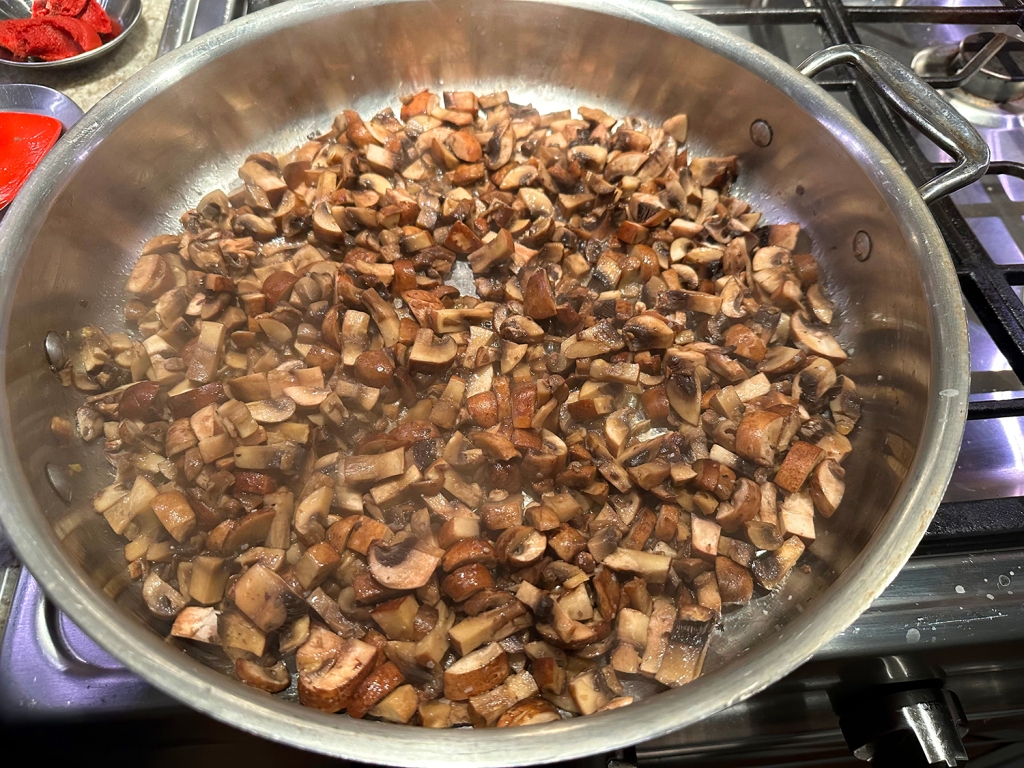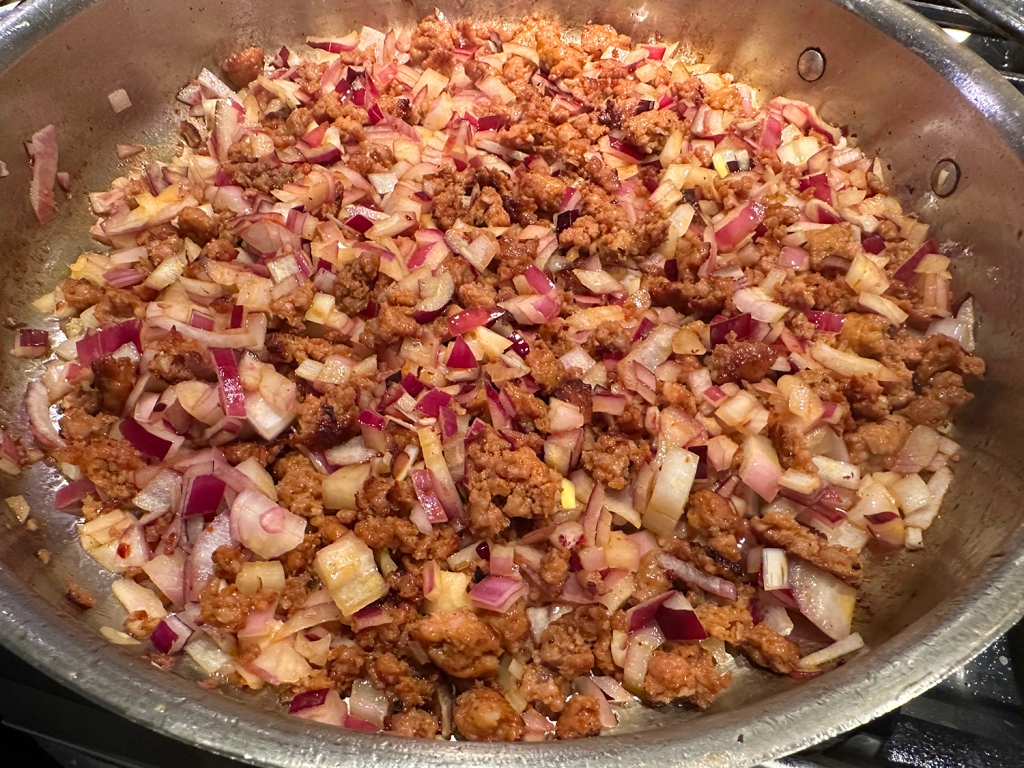This weeknight Brussels sprout pasta dish is bursting with autumnal flavors. Leaving some of the outer Brussels sprouts leaves whole before roughly chopping the centers ensures you get different shapes and textures in every bite; hot Italian sausage adds heft and spice (add more red pepper flakes if you like—which of course we did!); pecans toasted in nutty brown butter are rich, cozy, and crunchy; and using Pecorino gives the dish a salty, sharp punch.
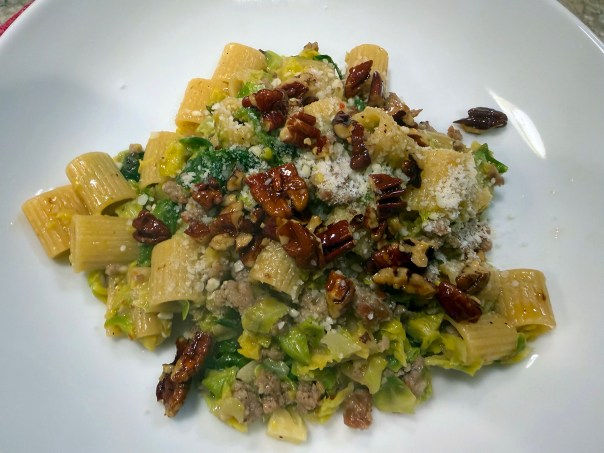
Now here is where we part from the original recipe. The amount of butter and oil to sauté the pecans seemed like overkill. We believe you could cut the amounts of butter and oil in half, although the original amounts are listed below.
Any type of medium pasta will work with this dish, such as mezze rigatoni, short tubes that will trap small bits of sausage and pecan for full-flavored bites. But you could consider orecchiette, conchiglie, or regular old penne. To get a luxurious, glossy sauce, cook your pasta until just shy of al dente (2 minutes less than package directions) so you can finish it in the sauce, with starchy water and butter helping bring everything together.
TIP: Get your pasta water on to boil first. As it warms up, use the prep time to assemble the rest of your ingredients.
In the end, it was quite luxurious and we were both surprised how much we liked it better than we thought we would. Instead of 1 pound of pasta, we used 12 ounces and felt it was a better balance with the other ingredients.
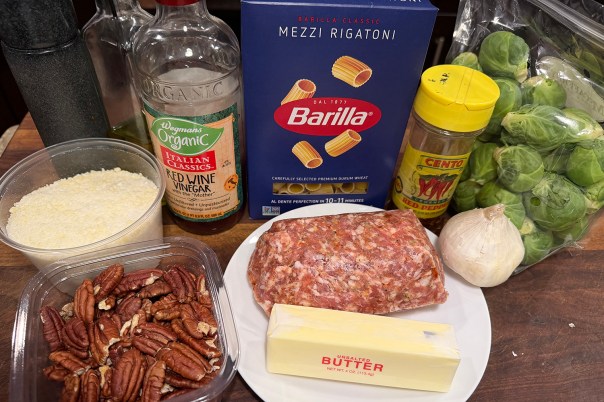
Brussels Sprout Pasta
Ingredients
- 1 lb. Brussels sprouts
- 1 lb. mezze rigatoni or other medium pasta
- Kosher salt
- 6 Tbsp. unsalted butter, divided
- 4 Tbsp. extra-virgin olive oil, divided
- 1 cup coarsely chopped raw pecans
- ¼ tsp. crushed red pepper flakes
- 1 lb. hot Italian sausage, casings removed if needed
- 3 garlic cloves, thinly sliced
- 1 oz. Pecorino, finely grated (about ½ cup), plus more for serving
- Freshly ground pepper
- 2 Tbsp. red wine vinegar

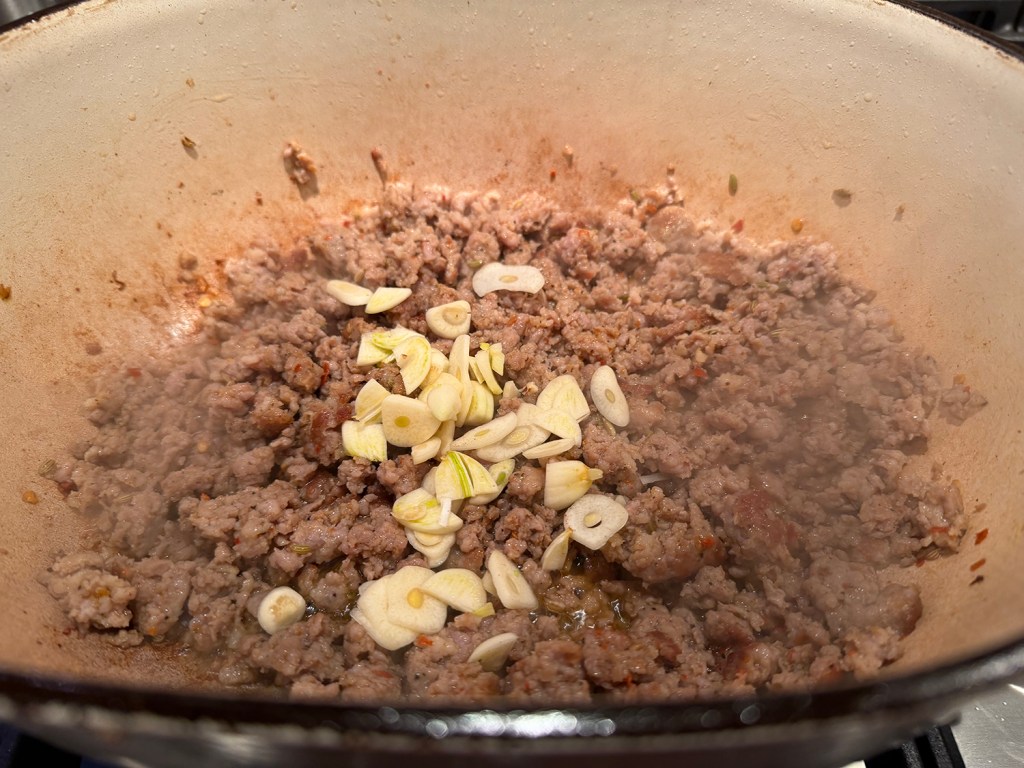

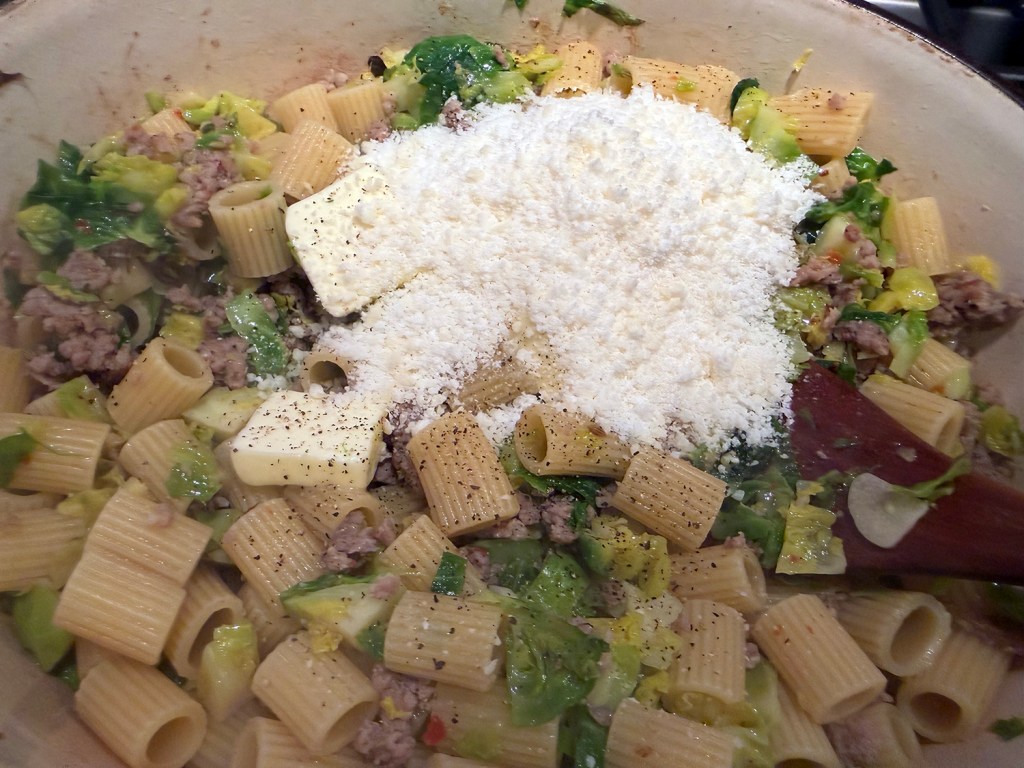
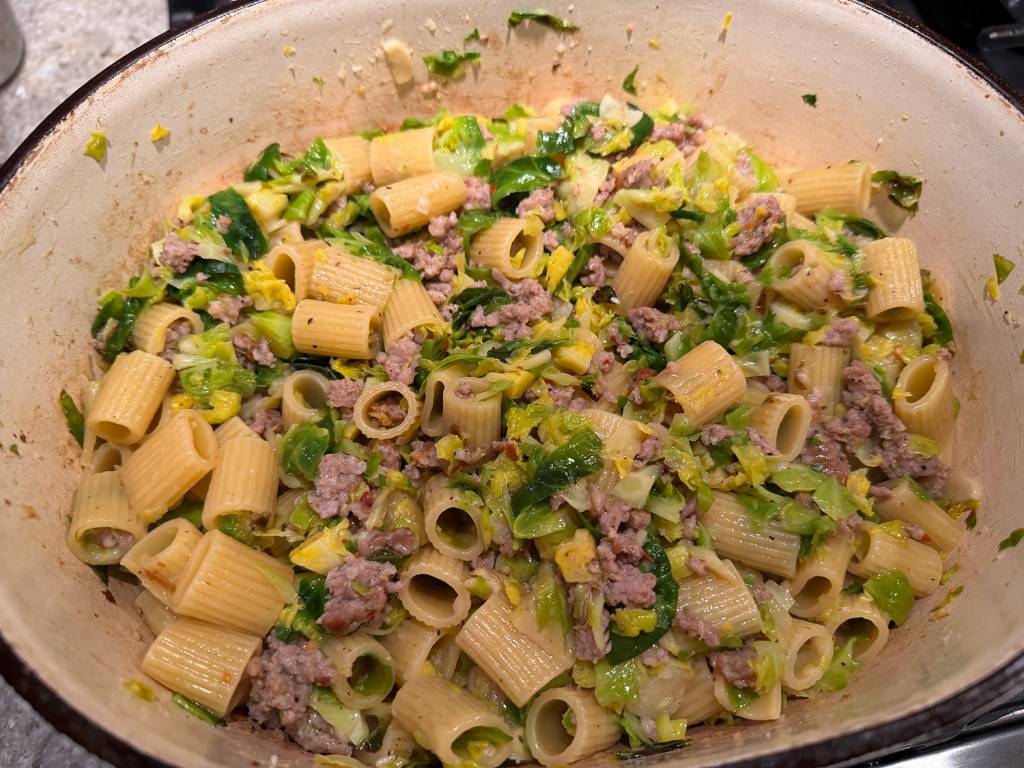
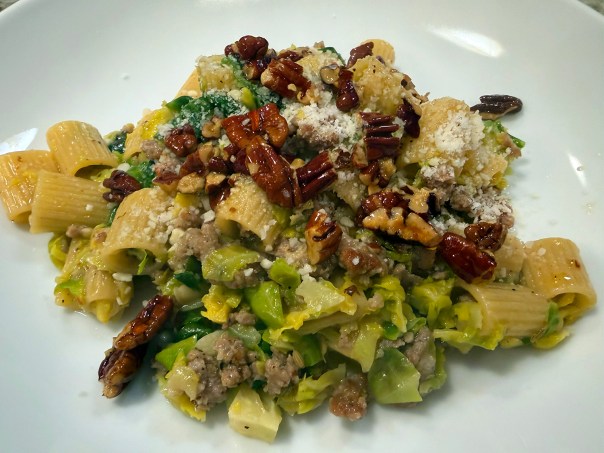
Directions
- Trim root ends from 1 lb. Brussels sprouts, letting any larger outer leaves fall off. Place leaves in a medium bowl. Coarsely chop remaining sprouts and transfer to same bowl as leaves; set aside.
- Cook 1 lb. mezze rigatoni or other medium pasta in a large pot of boiling salted water, stirring occasionally, until very al dente, about 2 minutes less than package directions. Drain, reserving 2 cups pasta cooking liquid.
- Heat 4 Tbsp. unsalted butter and 2 Tbsp. extra-virgin olive oil in a medium Dutch oven or other heavy pot over medium-high until butter is melted. Add 1 cup coarsely chopped raw pecans and cook, stirring constantly, until nuts are darkened in color and fragrant and butter mixture browns (it will be slightly darker than plain brown butter because of the pecans), about 2 minutes. Transfer to a medium bowl, stir in ¼ tsp. crushed red pepper flakes, and season with salt. Wipe out pot.
- Heat remaining 2 Tbsp. extra-virgin olive oil in same pot over medium-high. Cook 1 lb. hot Italian sausage, casings removed if needed, breaking up with a wooden spoon, until browned and cooked through, about 5 minutes. Add 3 garlic cloves, thinly sliced, and reserved Brussels sprouts; season with salt. Cook, stirring occasionally, until Brussels sprouts are slightly wilted, 2–3 minutes.
- Add pasta, 1 cup reserved pasta cooking liquid, 1 oz. Pecorino, finely grated (about ½ cup), and remaining 2 Tbsp. unsalted butter; season generously with freshly ground black pepper. Cook, stirring constantly and adding more pasta cooking liquid as needed, until pasta is coated and sauce is glossy, 2–3 minutes. Remove pasta from heat and stir in 2 Tbsp. red wine vinegar. Taste and season with more salt if needed.
- Divide pasta among shallow bowls and top with buttery pecans, dividing evenly, and more Pecorino.
Adapted by a recipe from Kendra Vaculan for Bon Appétit



